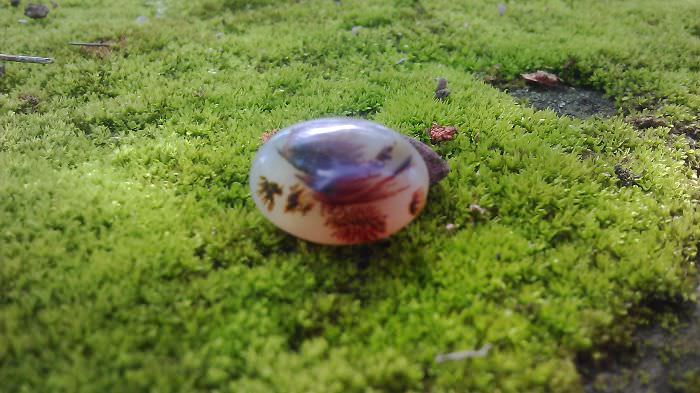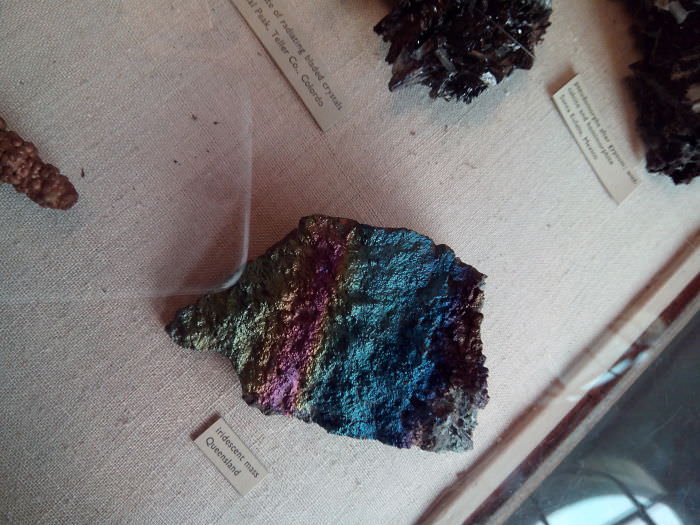Our planet holds an astonishing array of beautiful stones and minerals, each with its unique history and properties. These geological wonders, forged over millions of years, are visually captivating and provide valuable insights into the Earth’s formation and evolution. From sparkling gems to rugged boulders, these natural wonders can be found all over the world and come in an endless variety of shapes, colors, and sizes. Whether you’re a geology enthusiast, a rock collector, or appreciate the beauty of nature, there’s no denying the allure of these fascinating specimens. In this post, we will delve into the fascinating world of stones and minerals, exploring their origins, unique characteristics, cultural significance, diverse applications, and some spectacular photos of these stones and minerals.
The Formation of Minerals and Stones
Minerals and stones form from various geological processes occurring over millions of years. These processes include crystallization from magma, precipitation from mineral-rich solutions, and metamorphism under extreme heat and pressure. As a result, each stone or mineral carries the story of the Earth’s dynamic history, making them invaluable resources for geologists and mineralogists.
Colors and Optical Properties
Their chemical compositions and crystal structures determine the vibrant colors and optical properties of minerals and stones. The presence of specific elements or impurities can cause stunning hues, while the arrangement of atoms within the crystal lattice can create unique optical effects such as iridescence or chatoyancy. These captivating visual characteristics contribute to the allure of these natural wonders.
Hardness and Durability
Minerals and stones display a wide range of hardness and durability, which is significant in their applications and value. The Mohs scale, developed in 1812 by German mineralogist Friedrich Mohs, measures the relative hardness of minerals and helps determine their suitability for various uses. The hardest mineral, diamond, scores a perfect ten on the Mohs scale, making it ideal for cutting tools and abrasives and a symbol of enduring love in the form of engagement rings.
Cultural Significance
Throughout history, minerals and stones have held immense cultural significance, symbolizing wealth, power, and spirituality. Ancient civilizations crafted intricate jewelry, sculptures, and ceremonial objects from precious and semi-precious stones, imbuing them with deep symbolic meaning. Many stones were believed to possess protective or healing properties, and their use in amulets and talismans remains popular to this day.
Birthstones: A Personal Connection to Minerals and Stones
Birthstones are an enduring tradition that connects individuals to the world of minerals and stones. Each month is associated with a specific gemstone, believed to bring luck, health, or prosperity to those born within that time. While the concept of birthstones dates to ancient civilizations, the modern list of birthstones was established in 1912 by the American National Association of Jewelers and has since been widely adopted.
Take a look at our collection of stunning rocks and exquisite stones featured below!
#1 Sunset Fire Opal
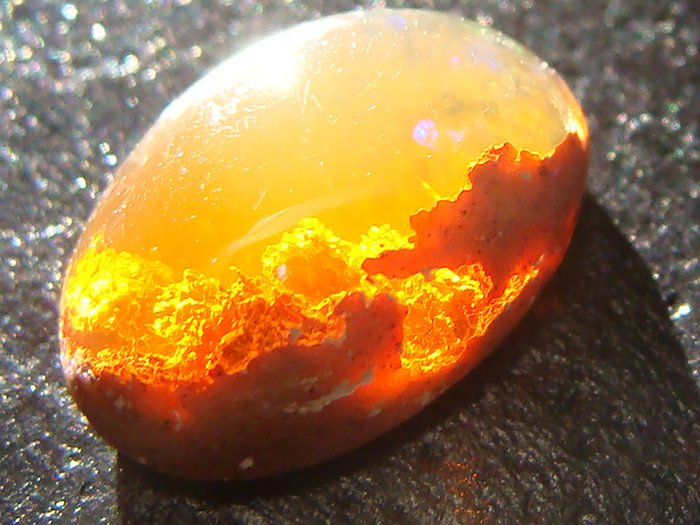
Sunset Fire Opal is a unique and captivating gemstone known for its vibrant and fiery color. This opal is characterized by its vivid orange and red hues, which create a stunning display reminiscent of a fiery sunset. The Sunset Fire Opal is found mainly in Mexico, but it can also be found in other parts of the world like Australia and Brazil.
The unique qualities of Sunset Fire Opal make it a popular choice for jewelry. It is a relatively soft stone, with a Mohs hardness of around 5.5 to 6.5, and it is typically cut into cabochons to showcase its stunning color. This stone is also believed to have healing properties and is often used to promote emotional healing and balance.
#2 Luz Opal with Galaxy Inside
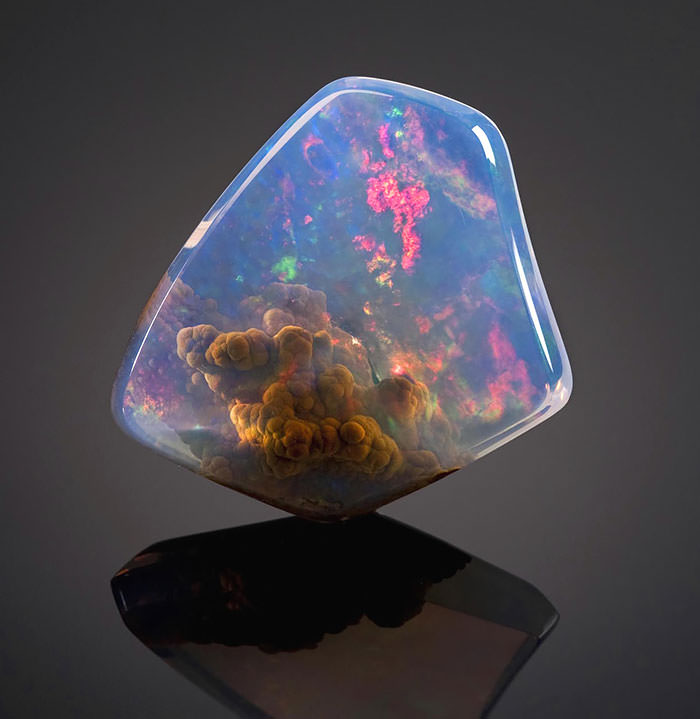
Luz Opal is a stunning and rare gemstone known for its unique iridescence and play of color. This opal is found mainly in the Andes Mountains of Peru, where it is mined by hand from underground veins. It is characterized by its bright, neon green and blue color, which creates a captivating and otherworldly appearance.
The Luz Opal is highly valued in the world of gemstones due to its unique and rare qualities. It is a delicate stone, with a Mohs hardness of around 5.5 to 6.5, and it requires careful handling during cutting and polishing. The stone's iridescence and play of color is caused by a unique internal structure that diffracts light in a specific way, creating the stunning color display that is characteristic of Luz Opal. It is often used in high-end jewelry pieces and is considered a prized addition to any gemstone collection.
#3 Ocean inside an Opal
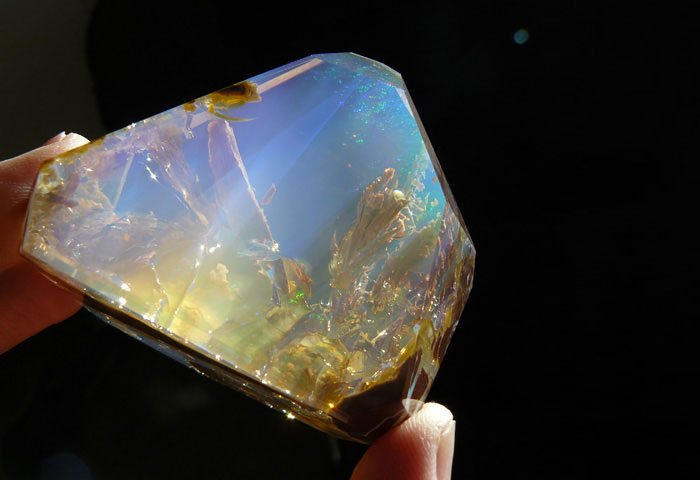
The play of color in an Ocean inside an Opal is caused by the diffraction of light through small silica spheres in the stone. This creates the unique appearance of swirling colors, which can range from deep blues and greens to lighter shades of blue and turquoise. This type of opal is found mainly in Australia, where it is mined from underground seams. It is a delicate stone, with a Mohs hardness of around 5.5 to 6.5, and requires careful handling during cutting and polishing. It is often used in high-end jewelry pieces and is considered a valuable addition to any gemstone collection.
#4 Bismuth

Bismuth is a unique and colorful metallic element that is often used in the creation of stunning crystal formations. It is a silvery-white metal that has a pinkish hue when exposed to air. Bismuth is mainly found in Peru, Mexico, and Canada.
One of the most unique properties of bismuth is its high diamagnetic susceptibility, which means it is repelled by a magnetic field. This creates a stunning visual effect when bismuth is magnetized, causing it to levitate and move in seemingly magical ways. Bismuth also has a low toxicity and is often used in cosmetics, as well as in the creation of alloys and various other industrial applications.
In addition to its practical applications, bismuth is also highly valued in the world of mineral collecting due to its unique crystal formations. These formations often have a stair-stepped appearance and are characterized by their vivid and iridescent colors, ranging from bright pinks and blues to greens and purples.
#5 Lightning Ridge black Opal
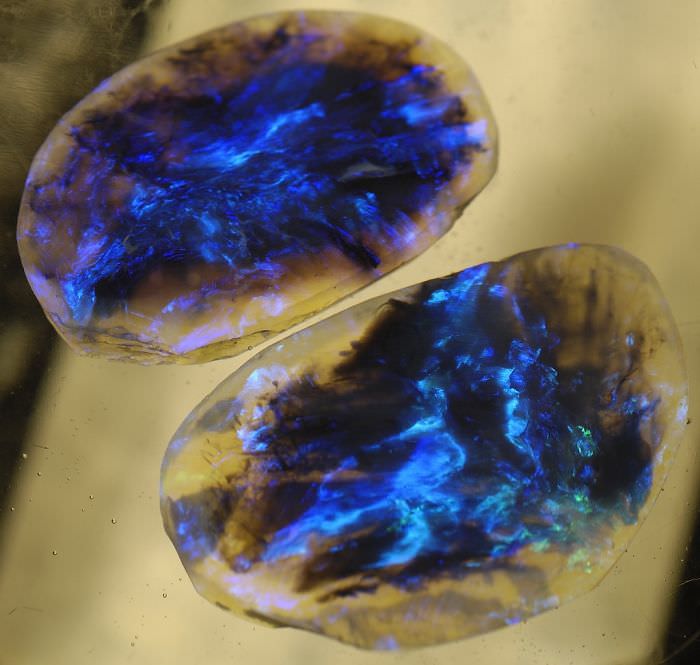
Lightning Ridge Black Opal is a rare and valuable type of opal that is found exclusively in the Lightning Ridge area of New South Wales, Australia. It is characterized by its deep and vivid colors, which range from dark blue and green to red and orange.
One of the most unique and desirable qualities of Lightning Ridge Black Opal is its play of color. This refers to the way that the opal diffracts light, creating a stunning and ever-changing display of color. The depth and intensity of color in Lightning Ridge Black Opal is often unmatched by other opals, making it highly prized in the world of gemstones.
Lightning Ridge Black Opal is typically cut into cabochons to showcase its stunning colors, and it is often used in high-end jewelry pieces. This opal is also believed to have metaphysical properties, with some people claiming that it can enhance emotional balance and promote feelings of creativity and inspiration. Due to its rarity and beauty, Lightning Ridge Black Opal is considered a valuable addition to any gemstone collection.
#6 Opal Fossil
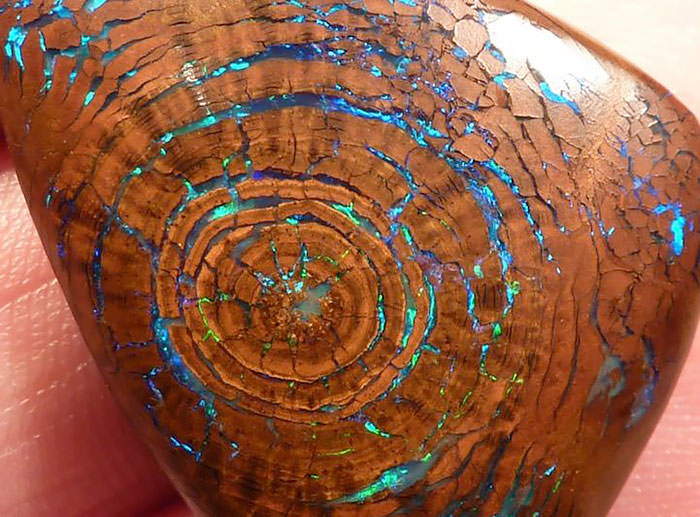
Opal Fossil, also known as Opalized Fossils, is a type of fossil that has been replaced by opal. These fossils are typically found in areas with opal deposits, such as Australia, where they are formed through a process known as replacement.
During the replacement process, minerals from the surrounding sediment seep into the fossil, replacing the original material with opal. This process can take millions of years and results in a fossil that has been transformed into a stunning opal gemstone.
Opal Fossils can be found in a wide range of colors, including blue, green, and red. They often exhibit a play of color, which is the result of the diffraction of light through the opal structure. This creates a stunning and ever-changing display of color that makes Opal Fossils highly sought after by collectors.
In addition to their beauty, Opal Fossils also have scientific value as they can provide insights into the evolution of life on Earth. By examining the preserved remains of ancient plants and animals, scientists can learn about the conditions that existed millions of years ago. Overall, Opal Fossils are a fascinating and valuable type of gemstone that combines the beauty of opal with the history of ancient life on Earth.
#7 Worlds biggest Amethyst Geode – the ‘Empress of Uruguay’
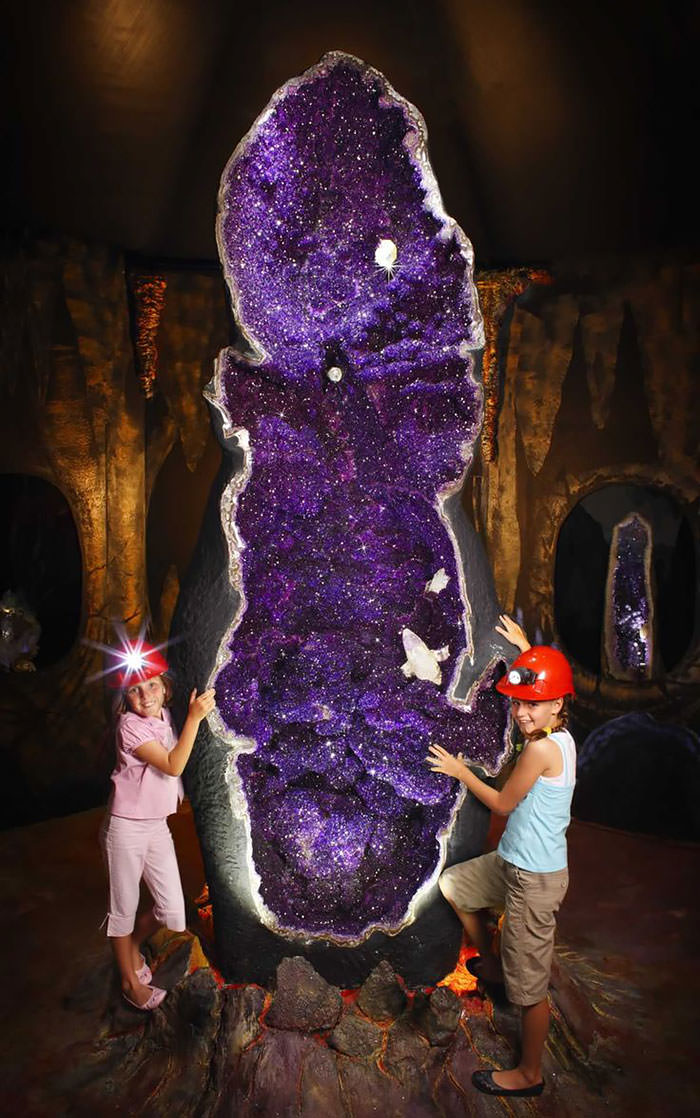
The 'Empress of Uruguay' is the largest Amethyst Geode in the world, weighing over two and a half tons and standing over 3 meters tall. It is an exceptional piece of geological art, discovered in Uruguay, South America.
This massive geode is composed of thousands of individual amethyst crystals that have grown together over millions of years. The crystals are a beautiful shade of deep purple, with some areas having a translucent quality that allows light to shine through, creating an ethereal and magical effect.
The 'Empress of Uruguay' is a rare and valuable piece of geological art, and it has become a popular attraction for tourists and gemstone enthusiasts alike. Due to its size and rarity, it is considered a prized addition to any gemstone collection. Additionally, amethyst is believed to have healing properties and is often used in alternative medicine and crystal healing practices. The 'Empress of Uruguay' is a stunning example of the natural beauty and power of amethyst crystals.
#8 Rose Quartz Geode
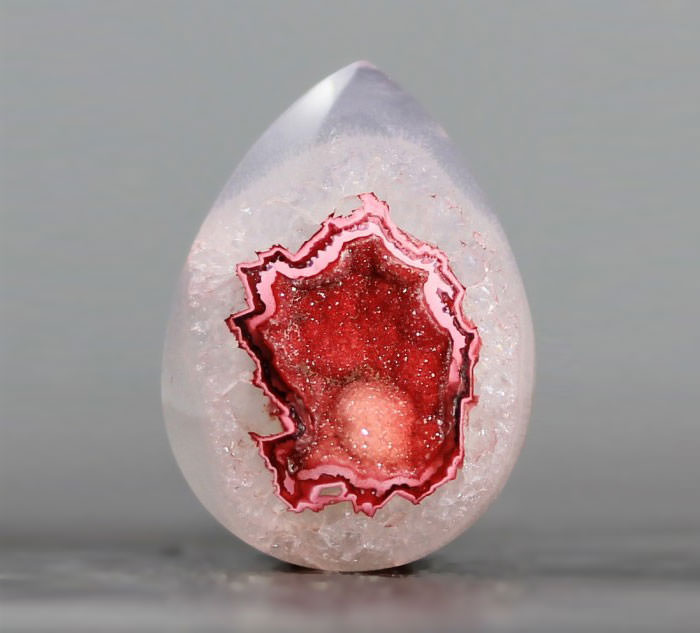
Rose Quartz Geode is a type of geode that is composed of rose quartz crystals. Rose quartz is a popular variety of quartz known for its pink color, which is caused by traces of titanium, iron or manganese. The geodes are typically found in areas with quartz deposits, such as Brazil, Madagascar, and South Africa.
Rose Quartz Geodes are characterized by their large, hollow cavities filled with hundreds or thousands of rose quartz crystals. These crystals often have a translucent or milky appearance, and the inner surface of the geode can vary from smooth and glassy to rough and jagged.
In addition to their beauty, Rose Quartz Geodes are believed to have metaphysical properties, with some people claiming that they can promote feelings of love, compassion, and emotional healing. Due to their popularity and healing properties, Rose Quartz Geodes are often used in home decor and spiritual practices.
#9 Fluorite

Fluorite is a colorful mineral that is composed of calcium and fluorine. It is known for its distinctive cubic crystal shape, and it is found in a range of colors, including purple, green, blue, and yellow. Fluorite is often found in areas with other minerals, such as lead and zinc deposits, and it is mined in countries such as China, Mexico, and the United States.
Fluorite is a highly sought-after mineral due to its unique physical and chemical properties. It is highly fluorescent, meaning that it glows under ultraviolet light. This property has made it valuable in industrial applications, such as in the manufacture of fluorescent lamps.
Fluorite is also a popular gemstone and is often used in jewelry making. Its range of colors and unique crystal shape make it a favorite among collectors and gemstone enthusiasts. Additionally, fluorite is believed to have metaphysical properties, with some people claiming that it can promote mental clarity, concentration, and spiritual awakening.
#10 Burmese Tourmaline

Burmese Tourmaline is a gemstone that is mined in the Mogok region of Burma (now Myanmar). It is a type of tourmaline, which is a complex boron silicate mineral that comes in a range of colors, including pink, green, blue, and black.
Burmese Tourmaline is highly valued for its unique coloration, which is often a deep pink or reddish hue. This is caused by the presence of manganese in the mineral. The gemstone is also characterized by its high clarity and excellent transparency, which allows light to pass through the stone and create a brilliant sparkle.
In addition to its beauty, Burmese Tourmaline is believed to have metaphysical properties, with some people claiming that it can promote creativity, self-confidence, and emotional healing. The gemstone is often used in jewelry making, especially in rings, necklaces, and earrings.
Burmese Tourmaline is a rare and valuable gemstone that is highly sought after by collectors and gemstone enthusiasts. Its unique color and clarity make it a standout addition to any jewelry collection, and its metaphysical properties have made it a popular choice for those seeking spiritual or emotional healing.
#11 Titanium Quartz
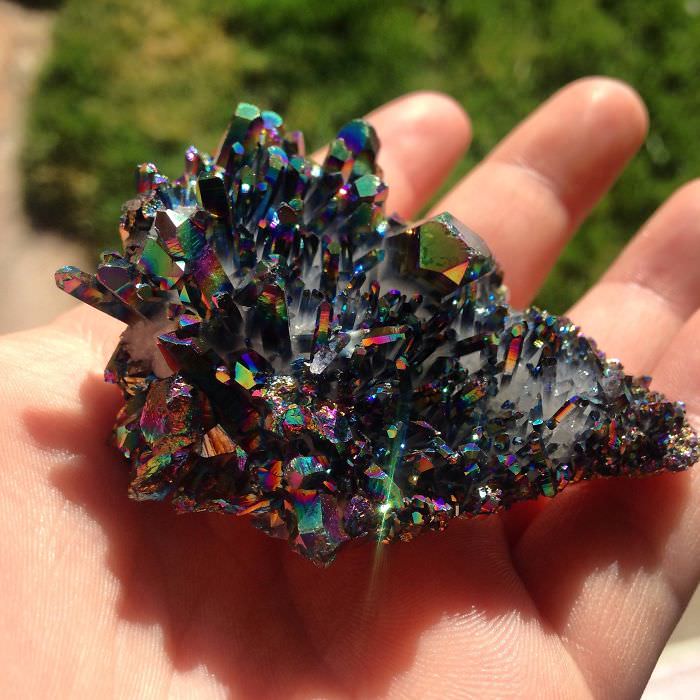
Titanium Quartz, also known as Flame Aura Quartz or Rainbow Aura Quartz, is a type of quartz crystal that has been coated with titanium and other metals using a process called vapor deposition. This process creates a metallic coating on the crystal that produces a range of colors, including blue, green, purple, and gold.
The colors of Titanium Quartz are caused by the interference and reflection of light on the surface of the crystal. This creates a range of iridescent colors that make Titanium Quartz a popular choice for jewelry making and decorative purposes.
Titanium Quartz is also believed to have metaphysical properties, with some people claiming that it can promote inner peace, confidence, and self-awareness. It is also believed to have a positive effect on the chakras, helping to balance and align them.
Titanium Quartz is found in various locations around the world, including Brazil, Russia, and the United States. It is a relatively rare and valuable gemstone that is highly sought after by collectors and gemstone enthusiasts. Its unique color and iridescence make it a standout addition to any jewelry collection or decorative display.
#12 Scolecite
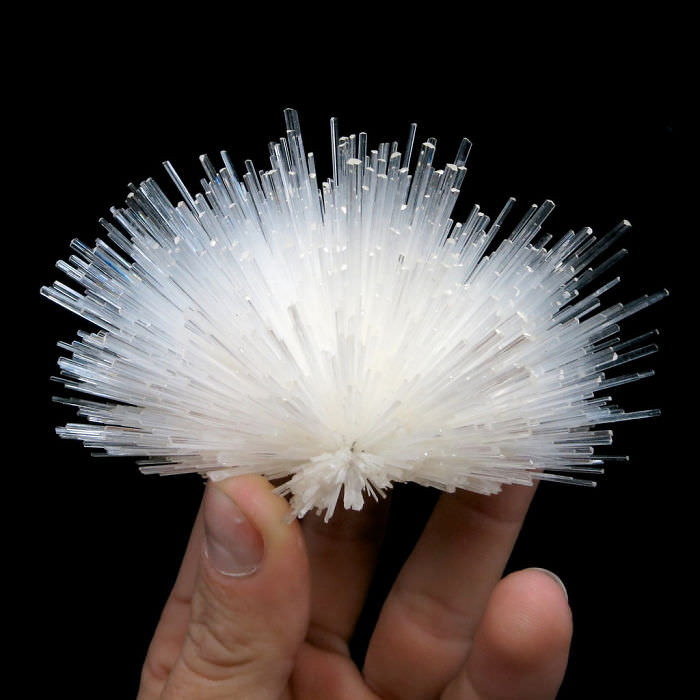
Scolecite is a rare and beautiful mineral that belongs to the zeolite family. It is named after the Greek word "skolec", which means "worm", due to its worm-like appearance when formed in long, thin crystals.
Scolecite is typically found in India, Iceland, and the United States, and is known for its unique crystal formation, which often includes delicate, intricate patterns. It is usually colorless or white, but can also be found in shades of pink or yellow.
Scolecite is believed to have various healing properties, including the ability to promote relaxation, reduce stress, and enhance communication skills. It is also said to have a calming effect on the mind and body, making it a popular choice for those seeking spiritual or emotional healing.
Due to its unique and delicate crystal formation, Scolecite is highly valued by collectors and gemstone enthusiasts. It is often used in jewelry making, as well as in decorative pieces and for metaphysical purposes.
#13 Chrysocolla in malachite
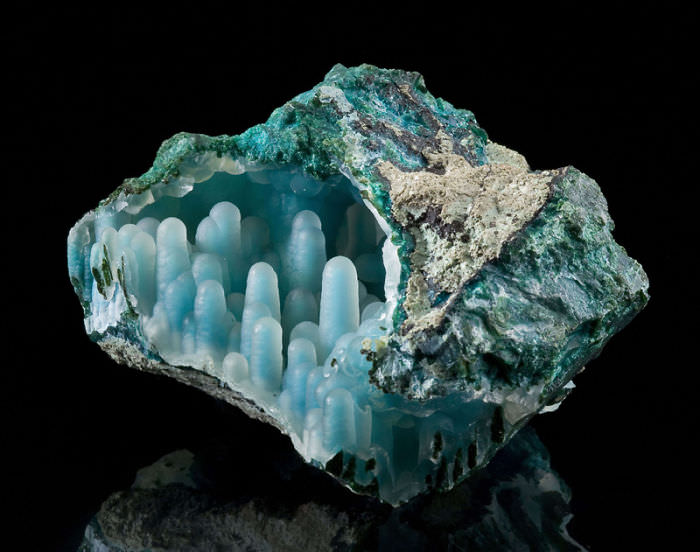
Chrysocolla in Malachite is a beautiful gemstone that is formed from the combination of two minerals, Chrysocolla and Malachite. Chrysocolla is a copper silicate mineral, while Malachite is a copper carbonate mineral. The combination of these two minerals creates a stunning stone that is known for its unique and vibrant blue and green colors.
Chrysocolla in Malachite is primarily found in areas where copper deposits are present, such as Arizona, Mexico, and Peru. It is commonly used in jewelry making due to its beauty and durability, as well as for decorative purposes.
Chrysocolla in Malachite is believed to have healing properties, including the ability to soothe and calm the mind, reduce stress, and promote emotional balance. It is also said to enhance communication and creativity, making it a popular choice for those seeking spiritual or emotional healing. It is a relatively rare and valuable gemstone that is highly sought after by collectors and gemstone enthusiasts. Its unique colors and patterns make it a beautiful addition to any jewelry collection or decorative display.
#14 Watermelon Tourmalin
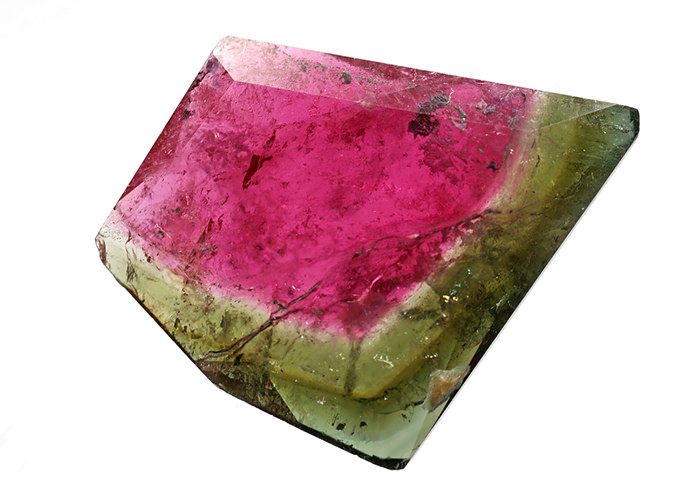
Watermelon Tourmaline is a gemstone that has a unique and beautiful appearance resembling a watermelon. It is a variety of Tourmaline, which is a mineral that can occur in a wide range of colors.
Watermelon Tourmaline is named for its green outer layer, pink inner layer, and white rind in the middle, resembling a slice of watermelon. It is primarily found in Brazil, Madagascar, and the United States.
This gemstone is believed to have various healing properties, including the ability to promote emotional balance, reduce stress, and enhance creativity. It is also said to improve communication and strengthen relationships.
Due to its unique appearance and healing properties, Watermelon Tourmaline is highly valued by collectors and gemstone enthusiasts. It is often used in jewelry making and decorative pieces, as well as for its metaphysical and spiritual properties.
#15 Azurite

Azurite is a beautiful and striking blue mineral that is composed of copper carbonate and is often found in association with other copper minerals such as malachite, turquoise, and chrysocolla. It is primarily found in the United States, Mexico, and Australia.
Azurite is known for its deep blue color, which can range from light blue to dark blue, and its often found in geode or stalactite formations. It is a popular mineral for use in lapidary work and is often used in jewelry making, decorative objects, and as a pigment in paints.
zurite is believed to have spiritual and metaphysical properties, including the ability to enhance intuition, promote creativity, and encourage clear communication. It is also said to promote mental clarity and reduce stress and anxiety.
#16 Bismuth
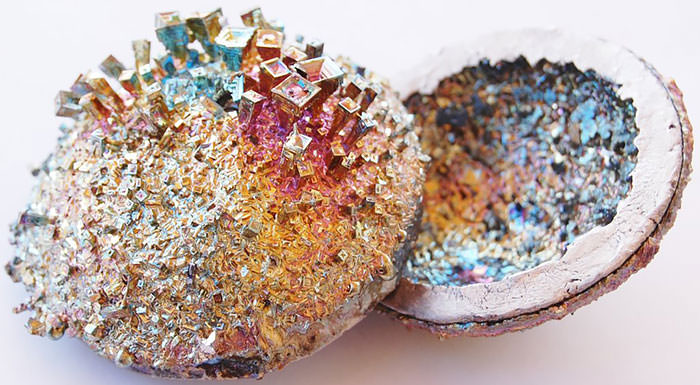
Bismuth is a chemical element with the symbol Bi and atomic number 83. It is a dense, silvery-white metal that is commonly found in minerals such as bismuthinite, bismite, and bismuthite. Bismuth is primarily mined in China, Peru, and Mexico.
Bismuth has a unique property in that it has a very low thermal conductivity, but a very high electrical conductivity. This makes it useful in a variety of applications, such as in the manufacturing of thermoelectric coolers and in the production of low-melting alloys.
Bismuth is also used in cosmetics, pharmaceuticals, and as a substitute for lead in some applications due to its low toxicity. It is also valued for its aesthetic qualities, as it forms stunning iridescent crystals that are often used in jewelry making and decorative objects. These crystals are formed by the oxidation of bismuth metal, resulting in an array of colors such as blue, purple, and gold.
#17 Rhodochrosite
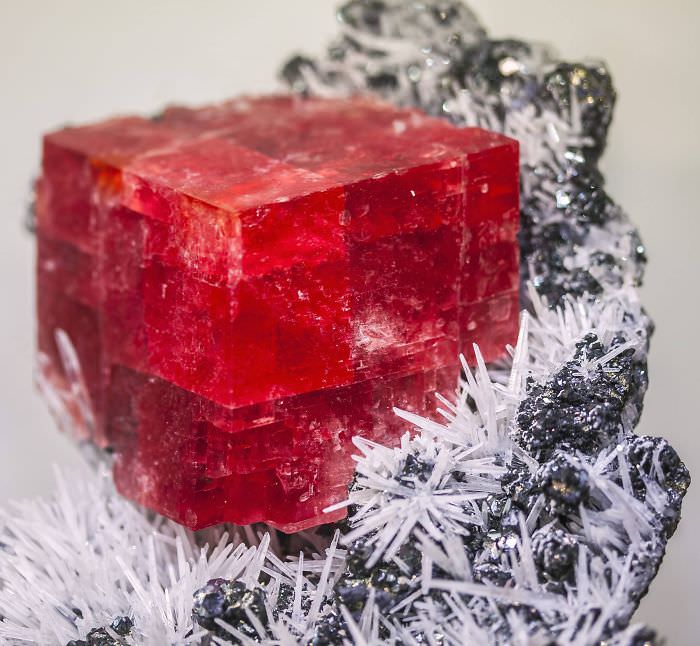
Rhodochrosite is a beautiful and vibrant pink to red mineral that is composed of manganese carbonate. It is primarily found in Argentina, but also in the United States, Peru, and South Africa.
Rhodochrosite is prized for its vivid color and unique banding patterns, which make it a popular choice for use in jewelry making, decorative objects, and lapidary work. It is also used in the production of manganese metal and other manganese compounds.
Rhodochrosite is believed to have spiritual and healing properties, such as the ability to enhance creativity, promote emotional balance, and stimulate the heart chakra. It is also said to have a calming effect on the mind and to help alleviate stress and anxiety.
#18 Uvarovite
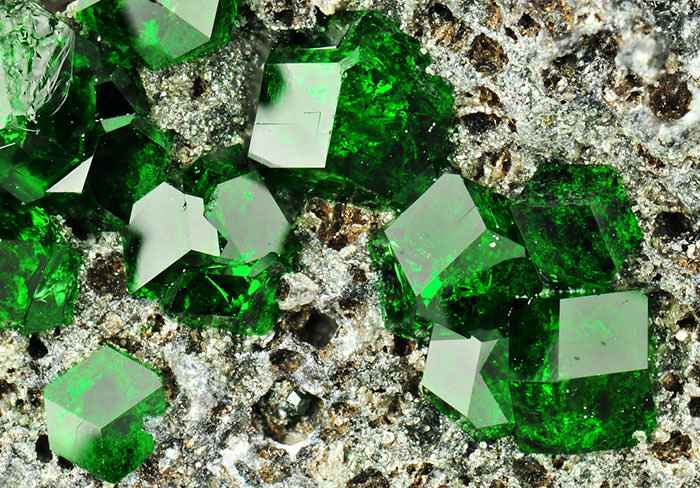
Uvarovite is a rare and highly valued mineral that belongs to the garnet family. It is distinguished from other garnets by its striking green color, which is due to its high content of chromium. It is named after Russian statesman Count Sergei Semenovitch Uvarov, who was also a mineral collector.
Uvarovite is primarily found in Russia, but also in Finland, Canada, and South Africa. It forms as small, rounded crystals that often grow in clusters or as coatings on other minerals.
Uvarovite is prized for its beauty and rarity, and is highly sought after by collectors and jewelry makers. Its rich green color makes it an attractive gemstone, and it is often used in fine jewelry settings such as rings, earrings, and pendants. Uvarovite is also used in industrial applications such as in the manufacture of metal alloys, ceramics, and glass. Its unique properties, such as its hardness and resistance to corrosion, make it a valuable resource in these industries.
#19 Realgar on calcite
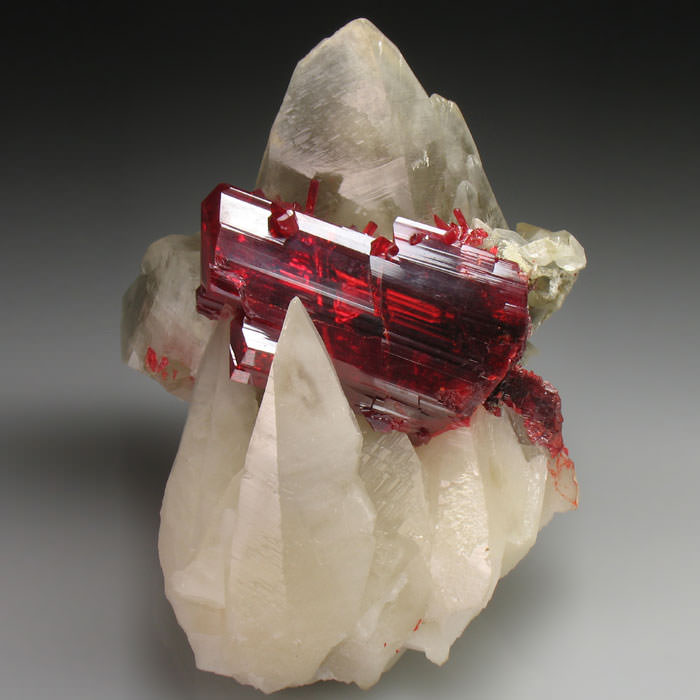
Realgar on calcite is a unique mineral specimen that consists of small, bright orange crystals of realgar (arsenic sulfide) growing on a white calcite matrix. It is named after the Arabic word "rahj al-ghar," which means "powder of the mine," due to its common association with other sulfide minerals in mines.
Realgar is a toxic mineral that is mainly used in traditional Chinese medicine for the treatment of various ailments such as arthritis, ulcers, and digestive disorders. However, it is also used in pyrotechnics and as a pigment in paints and dyes.
The combination of realgar and calcite in this mineral specimen creates a striking contrast of bright orange and white. The orange color is due to the presence of arsenic, while the white is due to the calcite matrix. This makes it a popular choice for collectors and as a decorative item.
It is mainly found in mines in China, but also in Romania, Peru, and the United States. Due to its toxicity, it should only be handled with proper protective gear and should not be ingested or inhaled.
#20 Crocoite

Crocoite is a striking mineral that is known for its vibrant red-orange color and long, prismatic crystal formations. It is a lead chromate mineral and has a unique and distinctive appearance that makes it popular among collectors and enthusiasts.
Crocoite is found in small quantities in various parts of the world, including Australia, Russia, and the United States. The largest and most well-known deposit of crocoite is located in Tasmania, Australia, where it was first discovered in the early 1800s.
Crocoite is often found in association with other minerals, including quartz, calcite, and galena. It has a bright luster and a high refractive index, which makes it an attractive mineral for use in jewelry and other decorative items.
Despite its beauty, crocoite is a toxic mineral that contains lead, chromium, and other hazardous elements. It should only be handled with proper protective gear and should not be ingested or inhaled. Despite its toxicity, crocoite remains a popular mineral among collectors and is highly sought after for its unique appearance and rarity.
#21 Fluorite/Quartz/Pyrite combination
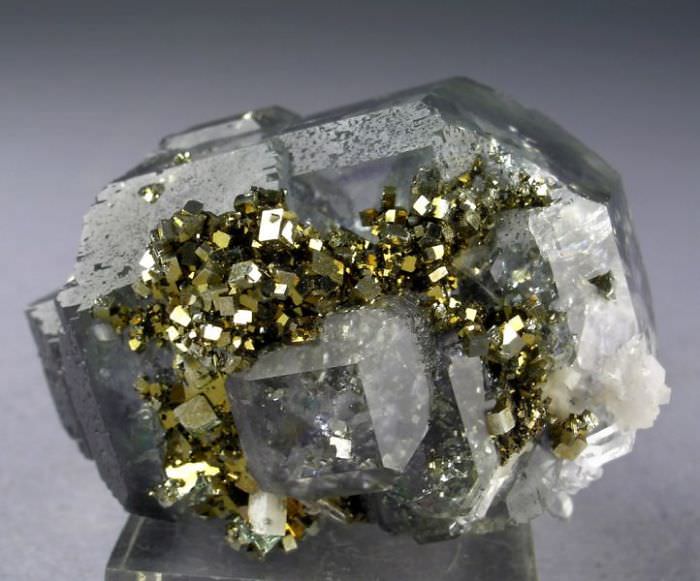
The combination of Fluorite, Quartz, and Pyrite is a stunning example of mineralogical diversity. Fluorite is known for its cubic crystal formation, with colors ranging from purple and green to yellow and blue, and is often used for decorative purposes. Quartz, on the other hand, is one of the most abundant minerals in the world, prized for its clarity and hardness, while Pyrite is known for its metallic luster and brassy yellow color.
When these minerals are found together, they create a visually striking display of color and texture. The combination of Fluorite, Quartz, and Pyrite is most commonly found in deposits throughout Europe, including Spain and France, as well as in parts of South America, including Peru and Brazil.
This mineral combination is popular among collectors due to its unique appearance, and it is often used in jewelry making and other decorative applications. The Quartz and Pyrite inclusions in the Fluorite add depth and interest to the stone, while the Fluorite itself provides a colorful and eye-catching element. The Fluorite/Quartz/Pyrite combination is a testament to the beauty and diversity of the natural world.
#22 Cobaltocalcite
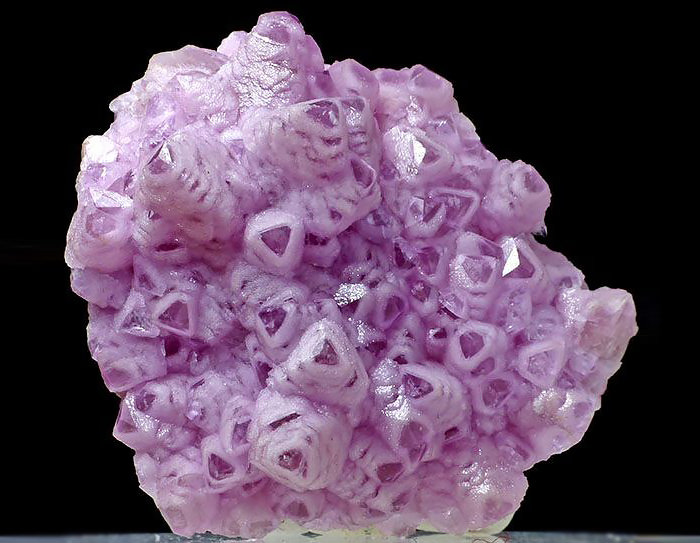
Cobaltocalcite is a rare mineral that is a member of the Calcite group, and is also known as Cobaltoan Calcite. It is a pink to red mineral that gets its color from the presence of Cobalt. This mineral is found in hydrothermal veins and is often associated with other Cobalt minerals such as erythrite and skutterudite.
Cobaltocalcite is found in several locations around the world, including the Democratic Republic of the Congo, Morocco, and the United States. It is a popular mineral among collectors due to its unique coloration and rarity. It is often used in lapidary work and as a decorative mineral specimen.
Cobaltocalcite has been used in various industrial applications, such as in the production of Cobalt metal and as a pigment in ceramics and glass. It has also been used in alternative medicine practices as a healing stone, believed to have properties that promote physical and emotional well-being.
#23 Tourmaline on Quartz with Lepidolite and Cleavelandite
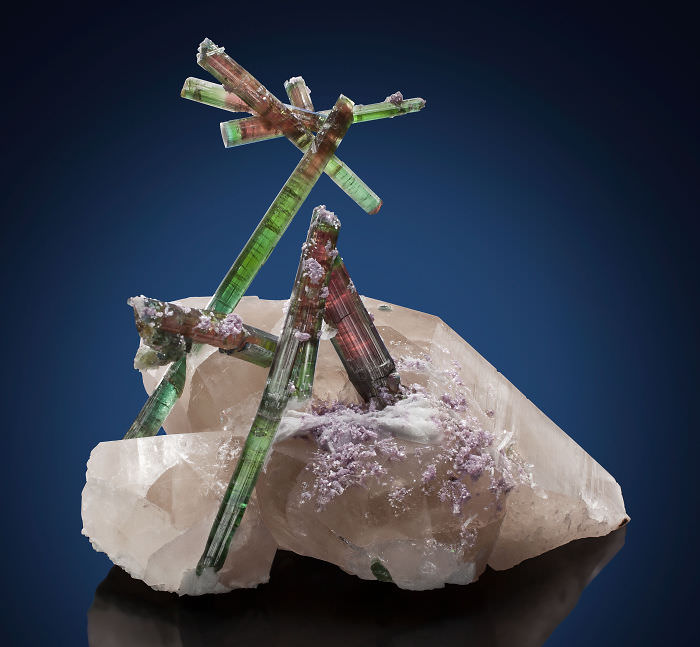
It is a beautiful mineral combination that is highly sought after by collectors. The tourmaline in this combination can vary in color, but is typically black or brown, while the quartz is usually clear or milky white. The lepidolite provides a soft purple hue, and the cleavelandite is a white feldspar mineral. This mineral combination is commonly found in pegmatites, which are igneous rocks that form from magma. They are found in many parts of the world, including Brazil, Afghanistan, and the United States.
It is prized for its aesthetic beauty and is often used in jewelry and as a decorative mineral specimen. Tourmaline is believed to have metaphysical properties, such as promoting a sense of calm and emotional stability, while quartz is believed to enhance spiritual awareness and clarity of thought. Lepidolite is thought to have calming and soothing properties, making this combination a popular choice for those who believe in the power of crystals and minerals.
#24 Botswana Agate

Botswana Agate is a banded variety of chalcedony that is found in the African country of Botswana. It is known for its unique patterns of grey, black, white, and sometimes pink or brown, which create intricate and fascinating designs. The colors are created by the presence of minerals such as manganese and iron oxide in the stone.
Botswana Agate is believed to have several metaphysical properties, including promoting a sense of calm and tranquility, improving focus and concentration, and enhancing creativity and self-expression. It is also said to help balance emotions and promote a sense of stability during times of change and transition.
Botswana Agate is a popular choice for jewelry and is often used in pendants, earrings, and bracelets. It is also used as a decorative mineral specimen and is highly valued by collectors due to its unique patterns and metaphysical properties.
#25 Alexandrite

Alexandrite is a rare and precious variety of chrysoberyl that is known for its unique color-changing properties. It was first discovered in 1834 in the Ural Mountains of Russia and is named after Tsar Alexander II. Alexandrite is typically green in daylight or fluorescent light, but under incandescent light or candlelight, it exhibits a striking red or purplish-red color.
The color-changing property of Alexandrite is caused by the presence of trace elements such as chromium, iron, and titanium. It is one of the most valuable and sought-after gemstones in the world, with top-quality stones commanding high prices.
Alexandrite is believed to have several metaphysical properties, including promoting intuition, enhancing creativity and imagination, and bringing joy and positivity. It is also said to help with stress and anxiety and to bring balance and harmony to the mind and body. Alexandrite is a popular choice for high-end jewelry and is often used in rings, necklaces, and earrings.
#26 Blue Agate Geode
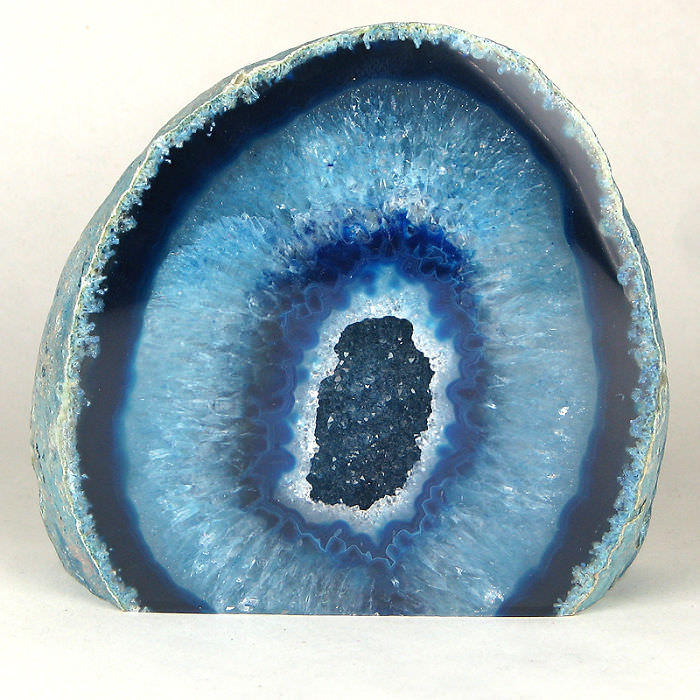
Blue agate geode is a beautiful and unique type of agate that is often used for decorative purposes. Agate is a type of quartz that is characterized by its banded appearance, and the blue variety is known for its stunning shades of blue and white. Blue agate geodes are formed in volcanic rocks, where pockets of gas and liquid are trapped and crystallize over time.
The inside of a blue agate geode is often lined with sparkling crystals, which create a striking contrast with the blue and white bands of the agate. These geodes are often used as decorative objects, and their unique beauty has made them popular in interior design.
They are believed to have several metaphysical properties, including promoting calmness, soothing emotions, and improving communication. They are also said to help with mental clarity and to promote balance and harmony in the mind and body. Blue agate geodes are a beautiful and meaningful addition to any home or office.
#27 A heart of flesh and blood ; Carneole
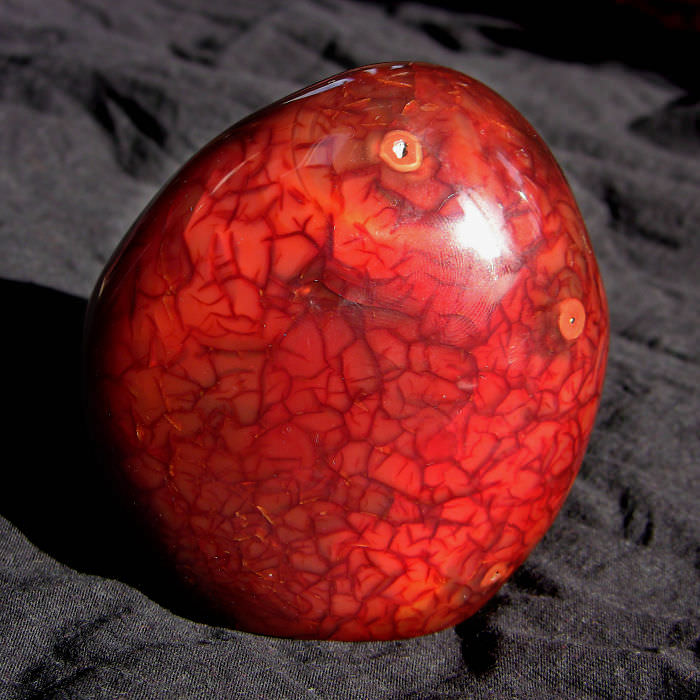
Carnelian is a beautiful orange to reddish-brown translucent variety of chalcedony, a mineral in the quartz family. It is found in many parts of the world, including India, Brazil, and the United States. The color of carnelian can range from light yellow-orange to dark reddish-brown, and it is often used in jewelry and decorative objects.
In ancient times, carnelian was believed to have many healing properties, including improving digestion, enhancing creativity, and providing courage and strength. Today, it is still believed to have some of these properties, and is often used in alternative medicine and crystal healing practices.
Carnelian is also said to promote vitality and endurance, and is believed to help with concentration and mental focus. It is a beautiful stone that can be used for a variety of purposes, from creating stunning jewelry to promoting wellness and balance in the mind and body.
#28 Purple Geode Druzy Stone
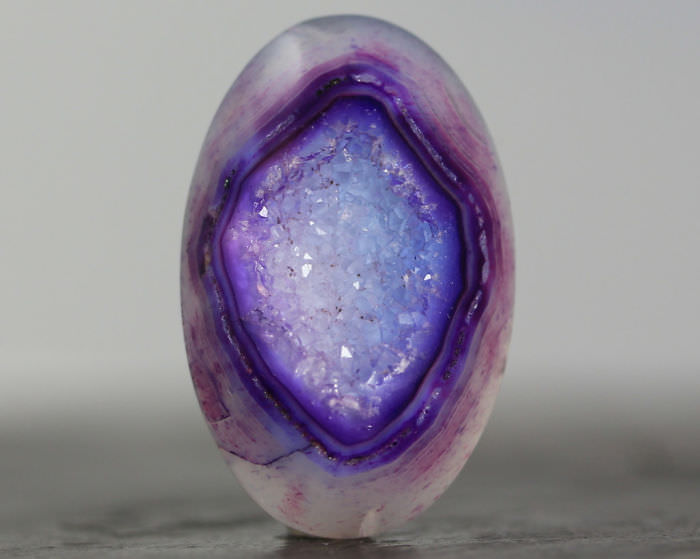
Purple geode druzy stone is a beautiful, natural mineral specimen that is characterized by its deep purple hue and sparkling druzy crystals. Geodes are spherical or oblong-shaped rocks that have a hollow cavity lined with crystals. They are formed from volcanic or sedimentary processes and are often found in areas with volcanic activity or sedimentary rocks.
The purple color of the geode is caused by the presence of minerals such as amethyst or fluorite. Druzy crystals are tiny, glittering crystals that form on the surface of the stone, creating a sparkling effect. Geode druzy stones are often used in jewelry making, as they make beautiful and unique pendants, necklaces, and earrings.
In addition to their aesthetic appeal, purple geode druzy stones are said to have healing properties, such as promoting relaxation and reducing stress and anxiety. They are also believed to promote creativity and enhance intuition and spiritual awareness. Whether used for their beauty or their metaphysical properties, purple geode druzy stones are a fascinating and unique addition to any collection.
#29 1.8 mm multicolor Rutile Crystal
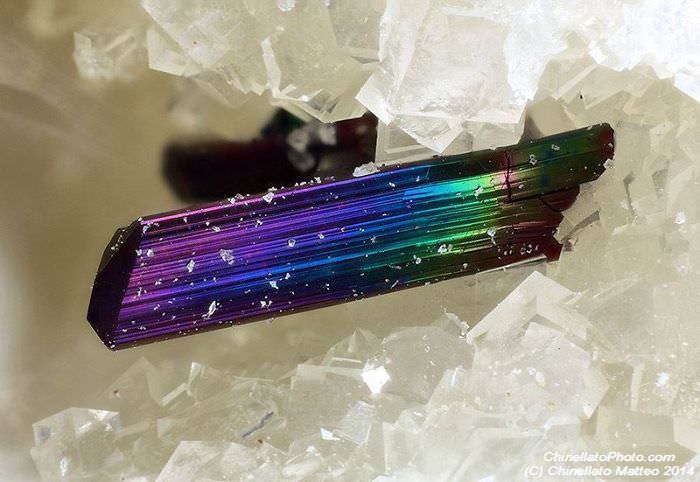
Multicolor Rutile Crystals are beautiful and rare natural mineral specimens that exhibit a range of colors, including shades of gold, red, and silver. Rutile is a mineral that is composed of titanium dioxide and is often found as needle-like crystals within other minerals, such as quartz.
The multicolor rutile crystals, which are typically small in size, ranging from 1.8 mm, are highly sought after by collectors due to their unique and beautiful color patterns. They are also used in jewelry making, as they make beautiful and unique accent stones.
Rutile crystals are believed to have metaphysical properties that promote physical and emotional healing. They are said to enhance creativity, intuition, and spiritual awareness, and to aid in meditation and spiritual practices.
Multicolor rutile crystals are typically found in locations where there are granite or metamorphic rocks, such as Brazil, Madagascar, and the United States. They are a beautiful and unique addition to any mineral collection or piece of jewelry.
#30 Obsidian

Obsidian is a naturally occurring volcanic glass that is formed by the rapid cooling of lava. It is a dark, glossy, and usually black mineral with a smooth texture, although it can also occur in other colors such as brown, green, or red, depending on the presence of impurities.
Obsidian is known for its sharp edges and was used in ancient times to make cutting tools and weapons. Today, it is still used in some surgical scalpels due to its sharpness and durability.
In addition to its practical uses, obsidian is also highly valued for its beauty and is often used in jewelry and decorative objects. It is believed to have healing properties and is used in spiritual practices, where it is said to help release negative energy and promote emotional healing.
Obsidian can be found in many volcanic regions around the world, including Mexico, the United States, and Italy. It is a fascinating mineral that has both practical and mystical uses and has been prized by humans for thousands of years.
#31 Gold (dragon) on Quartz
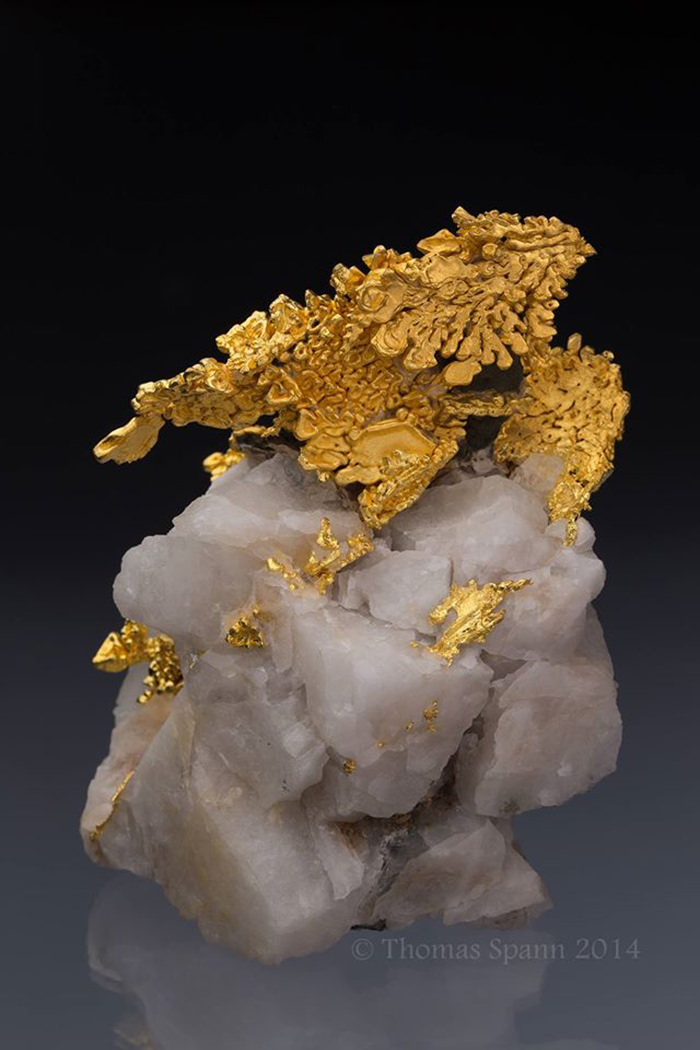
Gold on quartz, also known as "dragon gold," is a beautiful and rare mineral that is highly sought after for its unique appearance. The gold is typically found in thin veins or flakes that run through quartz, creating a stunning contrast between the bright metallic gold and the translucent white or clear quartz.
This mineral is often associated with ancient Chinese culture, as the Chinese have long been fascinated with dragons and have used gold in many of their decorative and artistic works. In fact, many of the most prized examples of gold on quartz come from China.
Gold on quartz can also be found in other parts of the world, including Australia, the United States, and Canada. It is often used in jewelry and other decorative items, but can also be prized by collectors and mineral enthusiasts.
#32 Phantom in Amethyst
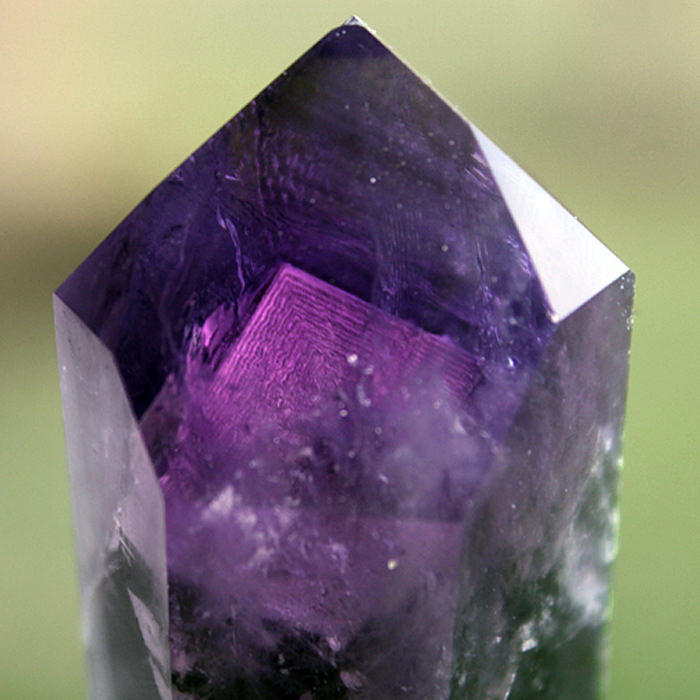
Phantom in Amethyst refers to a phenomenon where the purple Amethyst crystals contain visible inclusions or ghost-like crystals within them. These inclusions occur when the growth of the crystal is temporarily interrupted, and a layer of mineral material gets deposited on its surface, after which growth resumes. The resulting crystal structure may contain distinct lines and shapes within the Amethyst, appearing like a ghost or a phantom within the crystal. The purple Amethyst is commonly found in Brazil, Uruguay, and Zambia, and it is believed to have properties that aid in relaxation, meditation, and spiritual growth. The Phantom in Amethyst enhances these properties and is considered a unique and desirable characteristic of the crystal.
#33 Crystals (xenotime, zircon) arranged in a radiating polished slice of rock – Chrysanthemumstone
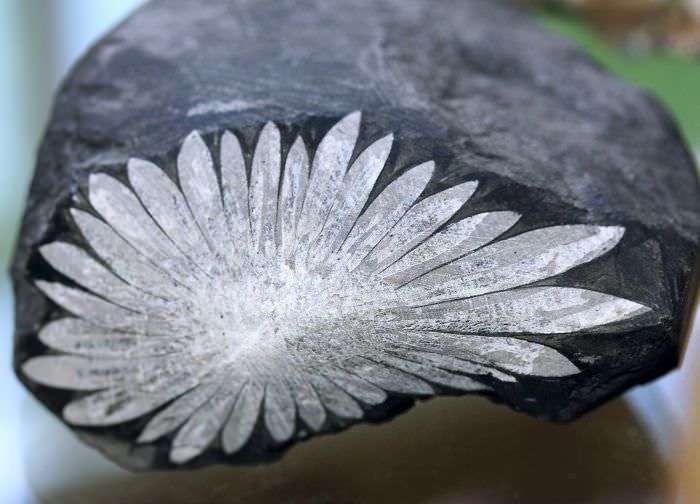
Chrysanthemum Stone is a unique type of rock that contains crystals of various minerals, such as xenotime and zircon, arranged in a radiating pattern. The pattern resembles a chrysanthemum flower, hence the name. The stone is typically black or dark grey with white or cream-colored mineral formations, giving it a beautiful contrast. The Chrysanthemum Stone is found in several locations worldwide, including China, Canada, and the United States. It is believed to possess several spiritual and healing properties, including promoting calmness, enhancing creativity, and promoting physical and emotional balance. The stone is often used in meditation practices and as a decorative gemstone.
#34 Labradorite
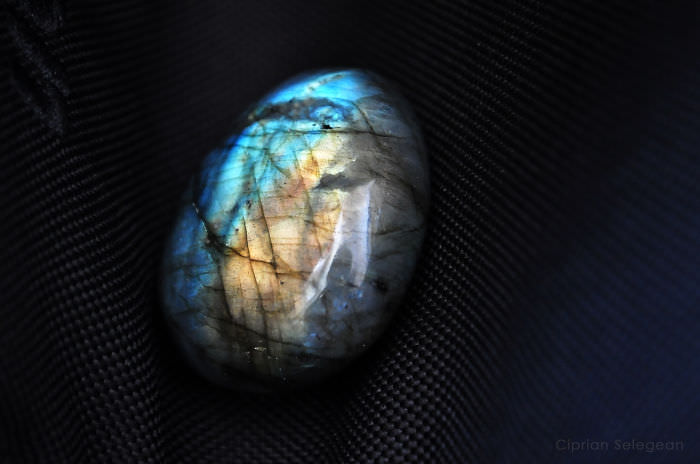
Labradorite is a unique and stunning gemstone that is known for its iridescent play of colors, including blues, greens, yellows, and oranges. It is a type of feldspar mineral that was first discovered in Labrador, Canada, in the late 1700s. Labradorite is now found in many locations worldwide, including Finland, Madagascar, and the United States. The stone is often used in jewelry and decorative objects due to its beautiful and mesmerizing appearance. In addition to its aesthetic qualities, Labradorite is believed to have several metaphysical properties, such as enhancing intuition, promoting emotional healing, and providing protection against negative energies. It is also associated with the third eye and crown chakras.
#35 Wulfenite
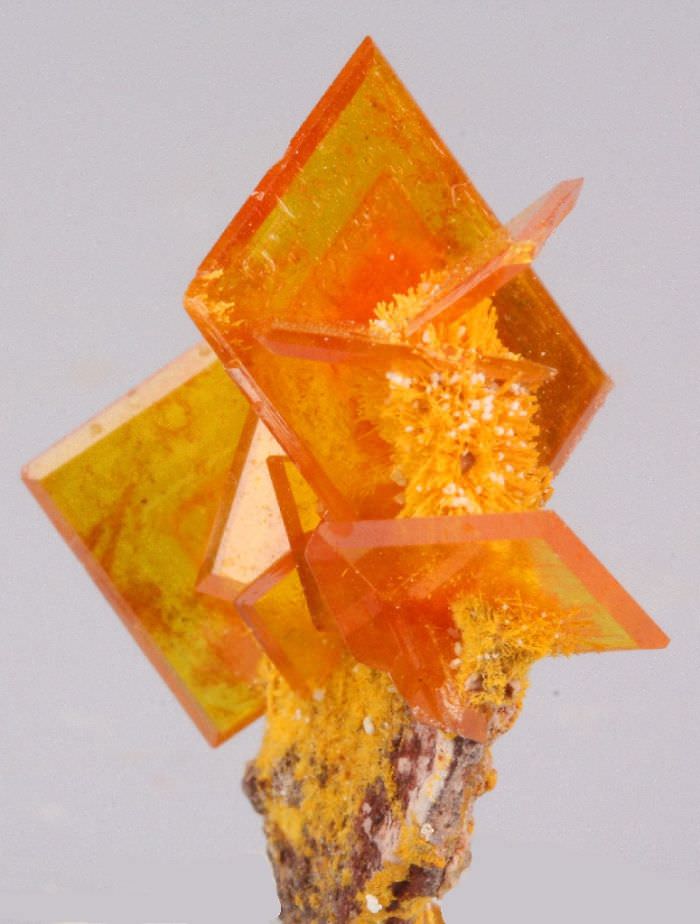
Wulfenite is a mineral with a distinctive bright orange-red to yellow-orange color, which makes it a popular mineral for collectors. It is composed of lead molybdate, and often forms as square or rectangular crystals with a high luster. Wulfenite can be found in many locations around the world, including the United States, Mexico, and Austria.
It has a number of industrial uses. It is used in the production of lead, as well as in the manufacture of enamel and glazes for ceramics. Wulfenite is also used as a mineral specimen, and can be found in museums and private collections around the world.
#36 Opalised Ammonite

Opalised ammonite is a type of fossil that is formed from the petrification of ammonite shells. Ammonites are an extinct group of marine mollusk that lived during the Mesozoic era. The opalisation process happens when the ammonite shell is buried in sediment and groundwater rich in silica seeps into the shell. Over time, the silica replaces the original shell material, resulting in a fossilised ammonite with opal as the replacement material. These opalised ammonites are found in areas where opal deposits are present, such as in Australia and Madagascar. They are prized for their unique iridescence and are highly valued by collectors and jewelry makers alike.
#37 Beautiful raw Emerald
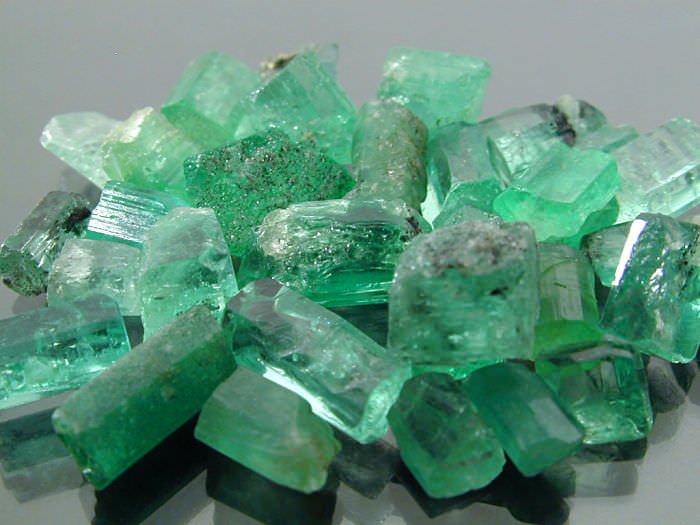
Emerald is a precious gemstone of the beryl family and is famous for its deep green color. This gemstone has a unique hexagonal crystal structure and is composed of aluminum, beryllium, silicon, and oxygen. The intense green color of emerald is due to the presence of chromium and vanadium in the crystal structure. The origin of this beautiful gemstone is found in Colombia, Zambia, Brazil, and Zimbabwe. Emerald is known for its properties of enhancing mental clarity, emotional balance, and creativity. The raw form of emerald showcases its natural beauty, with its rough texture and vivid green color making it a stunning addition to any collection.
#38 Fukang Meteorite
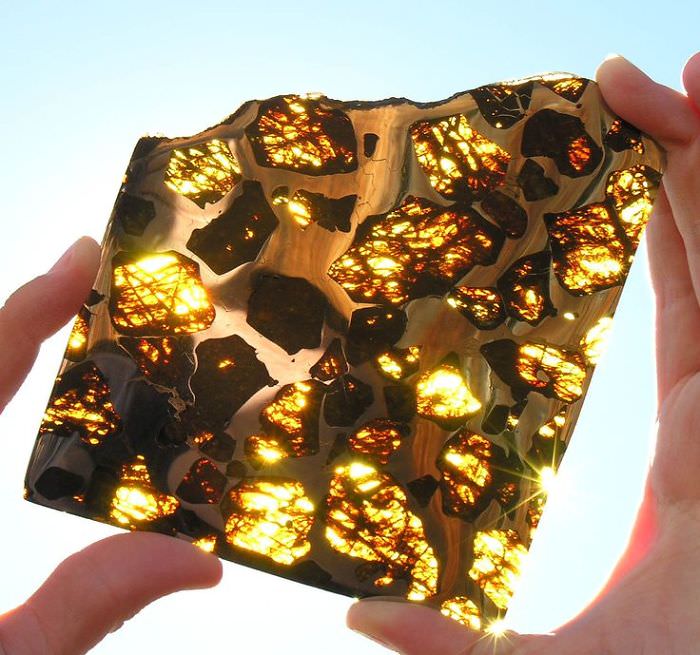
The Fukang Meteorite is a famous meteorite that fell in the Gobi Desert of China in 2000. It is a type of pallasite meteorite, which contains both metal and gem-quality olivine crystals. The Fukang Meteorite is estimated to be over 4.5 billion years old and is believed to have originated from the asteroid belt between Mars and Jupiter. It is known for its beautiful, greenish-yellow olivine crystals, which are sometimes cut and polished into gemstones. Due to its rarity and beauty, the Fukang Meteorite is highly sought after by collectors and is considered one of the most valuable meteorites in the world.
#39 Peacock Coal – Mcadoo, Pennsylvania, U.S.A
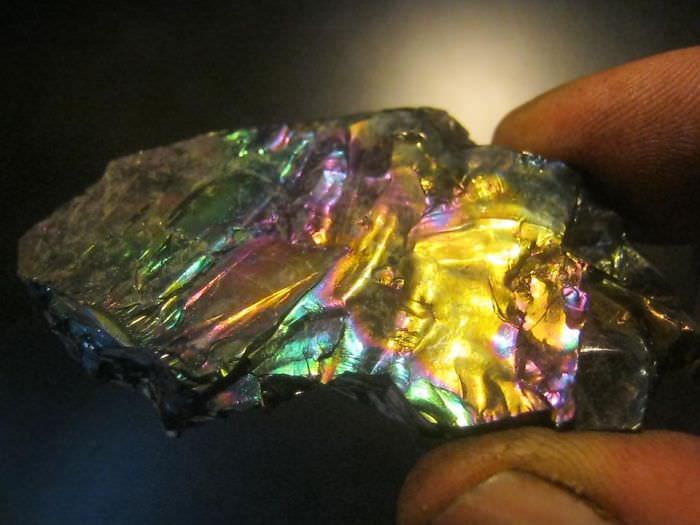
Peacock coal, also known as rainbow coal, is a type of bituminous coal found in the region of McAdoo, Pennsylvania, USA. Its unique and striking colors are the result of the presence of mineral impurities such as iron oxide and pyrite, which reflect and refract light in a way that creates a rainbow-like iridescence on the coal's surface. Peacock coal is highly prized by collectors for its beauty and rarity. However, it is important to note that the burning of peacock coal for energy purposes is not recommended due to the release of harmful fumes and pollutants.
#40 Cuprite, Congo
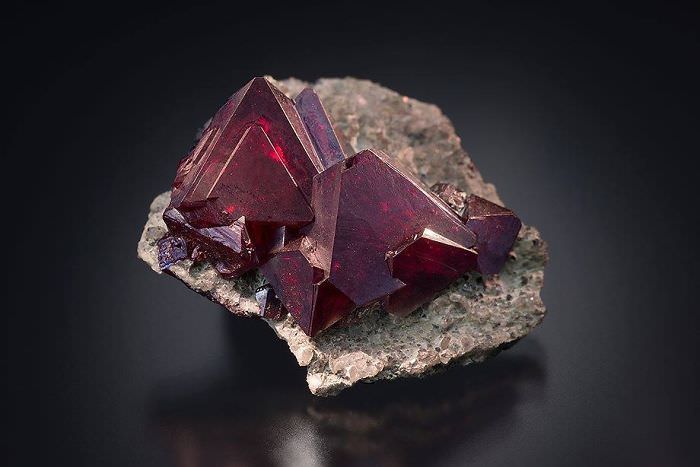
Cuprite is a deep red mineral that is typically found in oxidized copper ore deposits. The Cuprite from Congo is particularly prized for its vibrant color and large crystal formations. Cuprite is a mineral composed of copper oxide, and is known for its distinctive red coloration. It is often found in association with other copper minerals such as malachite and azurite. The Cuprite from Congo is highly valued by collectors and lapidaries due to its deep red color, which is caused by the presence of copper. It is used in jewelry making and as a decorative stone, and is also valued for its metaphysical properties, which are said to include grounding, protection, and emotional healing.
#41 Honey Calcite glowing through Fluorite
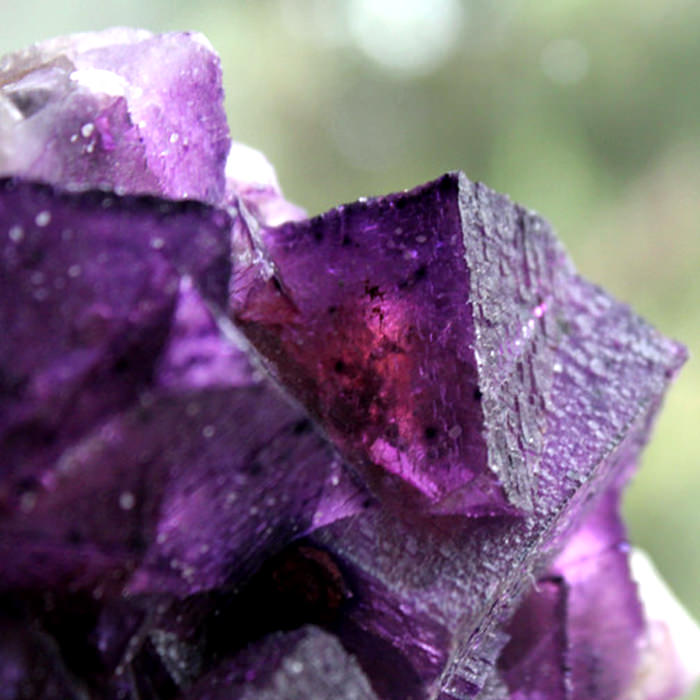
Honey calcite is a beautiful, honey-colored mineral that is often found in Mexico and the United States. When combined with fluorite, another popular mineral, it creates a stunning display of color and texture. The honey calcite is visible through the translucent, purple fluorite, creating a unique contrast that draws the eye. This particular specimen has the added bonus of glowing in the dark, creating a beautiful and ethereal display when viewed under UV light. The glowing effect is due to the presence of phosphorescent minerals within the honey calcite. Overall, this piece is a stunning example of the beauty and complexity found in the natural world.
#42 Peruvian Blue Opal
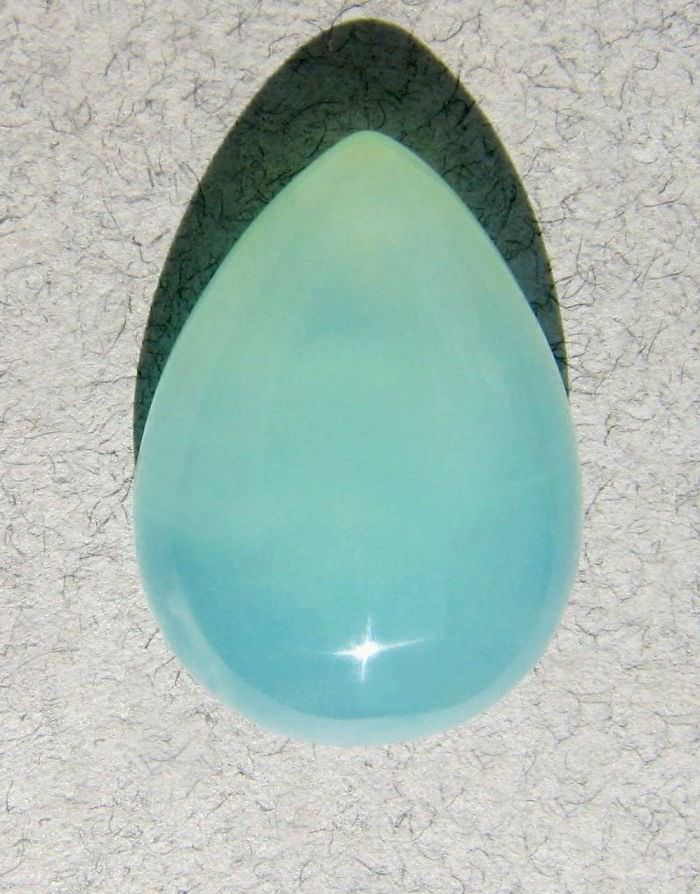
Peruvian Blue Opal is a type of opal that is found mainly in the Andes Mountains of Peru. It is characterized by its stunning blue-green color, which is caused by the presence of copper in the mineral. The stone is known for its calming and soothing properties, making it a popular choice for meditation and spiritual practices. It is also believed to enhance communication skills and help with emotional balance. Peruvian Blue Opal is a relatively soft stone, with a Mohs hardness of around 5 to 6, and it is often used in jewelry and carvings due to its unique color and translucence.
#43 Lion fish
#44 Colusite & Sphalerite
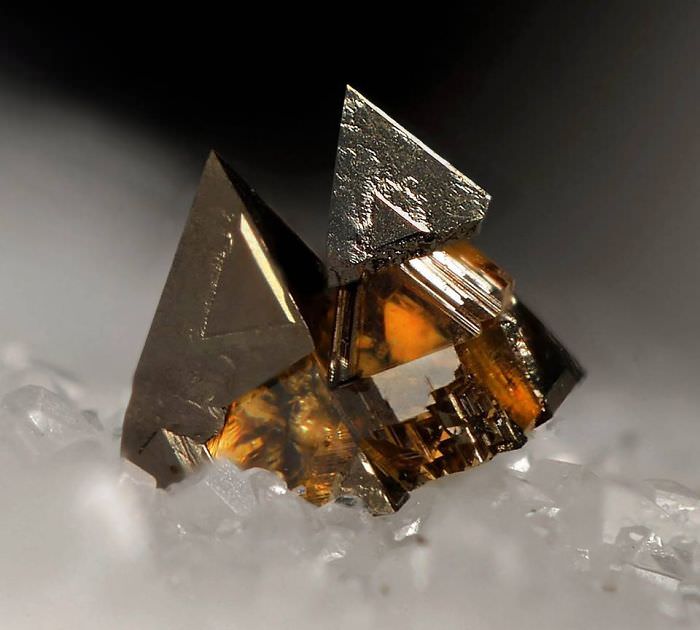
Colusite is a rare copper-lead sulfide mineral that has a dark-gray to black color and metallic luster. It was first discovered in Colombia in 1957 and has since been found in a few other locations worldwide, including Bolivia and China. Colusite is an important ore of both copper and lead and can also contain small amounts of silver.
Sphalerite, on the other hand, is a common zinc sulfide mineral that can range in color from yellow to brown to black. It often occurs in association with other sulfide minerals such as galena and chalcopyrite. Sphalerite is an important zinc ore mineral and is commonly found in hydrothermal veins, as well as in sedimentary rocks and metamorphic rocks. In some cases, it can even fluoresce under UV light.
Colusite and sphalerite can sometimes be found together in mineral deposits, especially in hydrothermal vein systems. The combination of these two minerals can create interesting specimens for mineral collectors, with colusite's metallic luster and sphalerite's range of colors and potential for fluorescence.
#45 Fire Agate
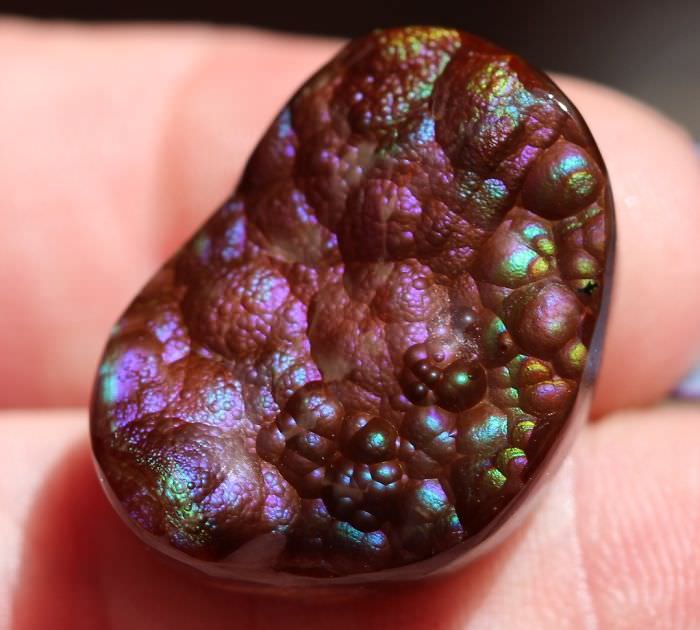
Fire agate is a variety of chalcedony, a mineral in the quartz family, that exhibits a unique iridescence caused by the thin layers of limonite within it. It is typically found in volcanic rocks and has a hardness of 6.5-7 on the Mohs scale. Fire agate is characterized by its play of color, which can include bright oranges, reds, yellows, and greens. The stone is believed to promote spiritual growth and clarity, and is often used in meditation or spiritual practices. It is primarily found in Mexico, but can also be found in the United States and other parts of the world.
#46 Wulfenite Crystal
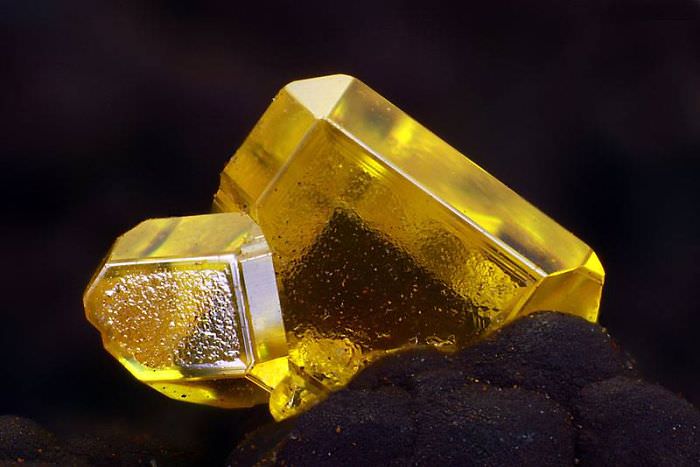
Wulfenite is a lead molybdate mineral that forms in the oxidized zones of lead deposits, often with other minerals such as pyromorphite, mimetite, and vanadinite. It has a bright orange-red to yellow-orange color and a resinous luster, with a distinctive tabular crystal habit. Wulfenite is commonly found in arid regions, particularly in the American Southwest, and is a popular mineral among collectors for its unique color and crystal form. It is also used as a minor source of lead and as a pigment in ceramics and paint. However, due to its lead content, it should be handled with caution and not ingested.
#47 Azurite and Malachite
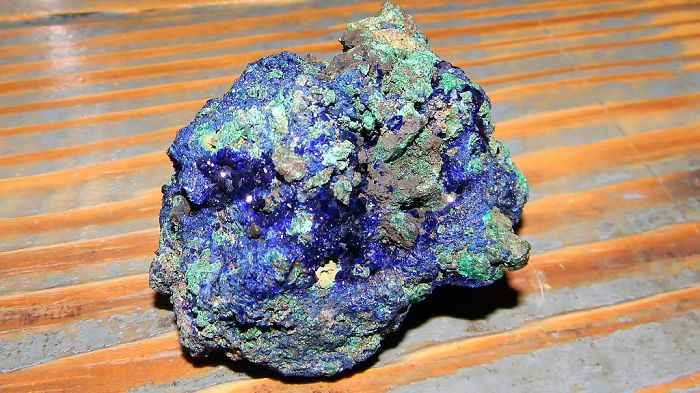
Azurite and Malachite are two copper-based minerals often found together. Azurite is a deep blue crystal, while malachite is green. Both minerals are formed in oxidized copper deposits, often in association with each other. Azurite is known for its vibrant blue color, which comes from copper carbonate hydroxide, and malachite gets its green color from copper carbonate. These minerals are often used in lapidary and jewelry making due to their unique color patterns and banded formations. Additionally, azurite and malachite have been used throughout history for their healing properties, with azurite believed to enhance intuition and malachite thought to help with emotional healing.
#48 Cyanotrichite – Arizona
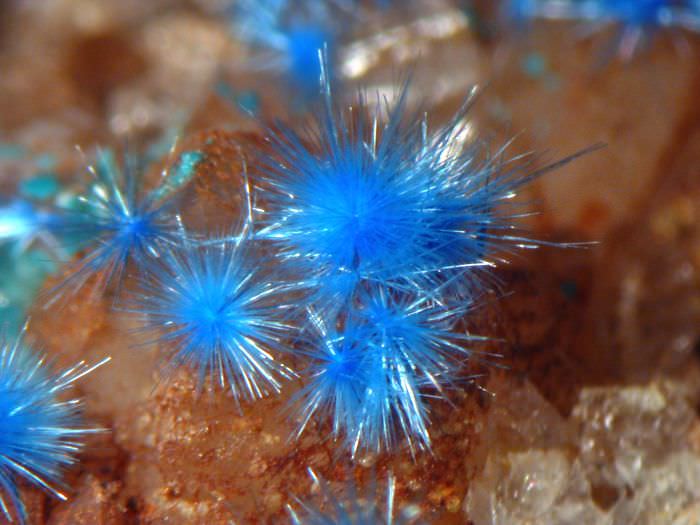
Cyanotrichite is a rare mineral found in the United States, particularly in Arizona. It was first discovered in 1900 in the Morenci Mine in Greenlee County, Arizona. Cyanotrichite is a copper sulfate hydroxide mineral, with a bright blue-green color and fibrous crystals that grow in radial clusters. Its name is derived from the Greek words "kyanos" meaning blue, and "trichos" meaning hair, due to its fibrous crystal structure. Cyanotrichite is a secondary mineral that forms in the oxidized zone of copper deposits, often found in association with other copper minerals such as azurite, malachite, and chrysocolla. Cyanotrichite is a popular mineral among collectors due to its rarity and unique appearance.
#49 Iceland Spar Calcite Crystal
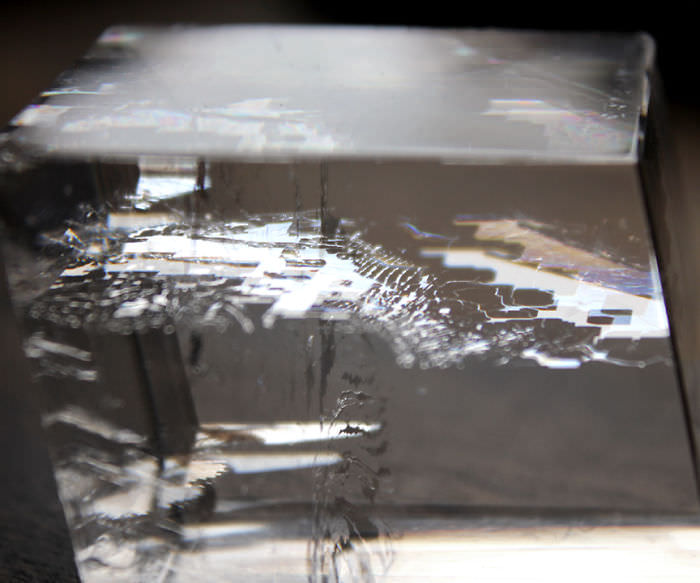
Iceland Spar Calcite, also known as optical calcite, is a colorless or white mineral that is found in Iceland and other regions. It is characterized by its unique optical properties, including double refraction, where light entering the crystal is split into two rays that travel at different speeds, resulting in a double image. Iceland Spar Calcite also exhibits birefringence, where the two rays of light travel through the crystal in different directions, resulting in the ability to see double images through the crystal. Because of its optical properties, Iceland Spar Calcite is often used in scientific and optical instruments, including microscopes and polarizing filters.
#50 Pink Quartz Geode

Pink Quartz Geodes are natural formations of Quartz crystals that are found inside volcanic rocks. The pink color of the Quartz is due to the presence of various minerals like manganese, titanium, and iron. The geodes are formed when gas bubbles get trapped inside the lava during volcanic eruptions. Over time, mineral-rich fluids seep into the cavities and form the crystals. Pink Quartz Geodes are believed to have healing properties, particularly for emotional healing, and are often used for meditation and spiritual practices. They are found in many locations around the world, including Brazil, Mexico, and Madagascar.
#51 Emerald
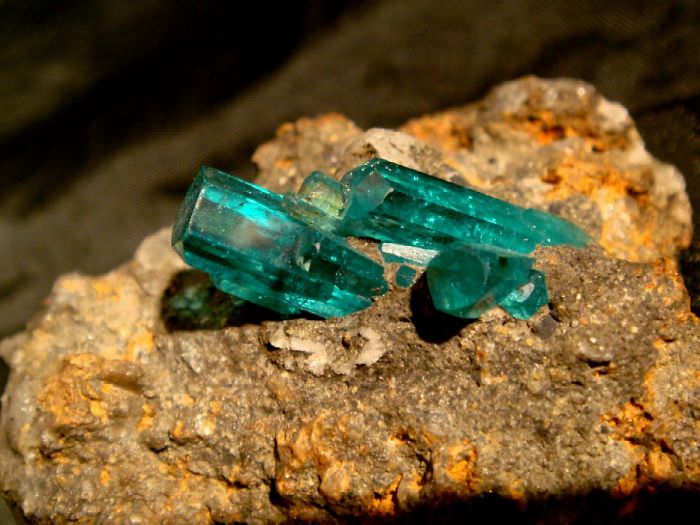
Emerald is a precious gemstone with a rich green color. It is a variety of the mineral beryl, and its green color is due to the presence of chromium and vanadium. Emeralds are found in a number of countries around the world, including Colombia, Brazil, Zambia, Zimbabwe, and Afghanistan. The most valuable emeralds are those that are deep green in color, with a high degree of clarity and few inclusions. The ancient Egyptians, Greeks, and Romans all prized emeralds for their beauty and rarity. Today, emeralds are a popular choice for jewelry and are often used in engagement rings.
#52 Azurite & Malachite on Smokey Quartz point with ‘Record Keeper’ Markings
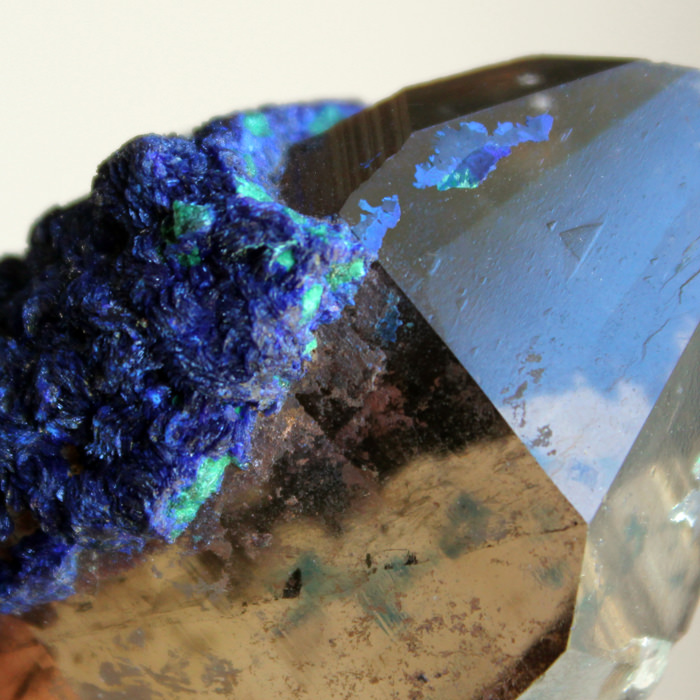
Azurite and Malachite are two copper-based minerals that are often found together in the same specimen, as is the case with this piece. Azurite is a deep blue mineral that is prized for its rich color and unique crystal formations. Malachite, on the other hand, is a green mineral that often forms botryoidal or stalactitic masses. The combination of these two minerals creates a beautiful contrast of colors and textures.
This particular specimen also features a Smokey Quartz point, which provides a grounding energy to balance out the more stimulating properties of the Azurite and Malachite. The "Record Keeper" markings on the Smokey Quartz point are said to hold ancient knowledge and wisdom, making this piece not only visually stunning but also spiritually significant. Overall, this is a truly special and unique crystal specimen.
#53 Chalsedoon

Chalcedony is a type of mineral that is composed of microcrystalline quartz. It is a cryptocrystalline form of silica that occurs in a wide range of colors, including white, gray, blue, brown, green, and red. Chalcedony is often used in jewelry due to its attractive colors and patterns, as well as its hardness and durability. It can be found all over the world, including in Brazil, the United States, Russia, India, and Madagascar. Chalcedony is known for its healing properties, which include promoting mental clarity, emotional balance, and physical strength. It is also said to help with communication and to enhance creativity.
#54 Ammolite; Opalized Ammonite Fossil
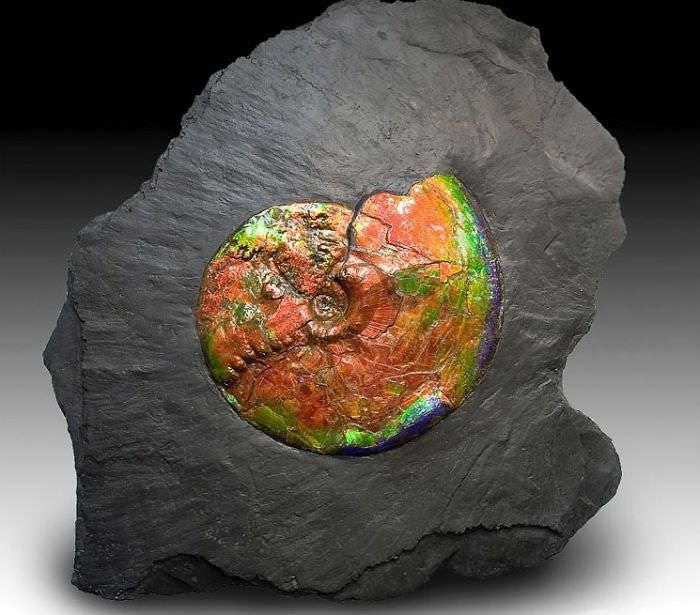
Ammolite is a rare and beautiful gemstone that comes from the fossilized shells of ammonites. These ancient creatures lived in the seas around 65 million years ago and became extinct along with the dinosaurs. Over time, the shells of some ammonites were buried in sediment and mineralized, creating a colorful gemstone that reflects the iridescence of the rainbow.
The colors in ammolite are caused by the interference of light as it passes through the layers of aragonite microcrystals that make up the shell. The color range includes green, yellow, orange, red, and purple, and can change depending on the angle of observation. The gemstone is found in a few locations around the world, including Canada and the United States, and is highly valued by collectors and jewelry enthusiasts.
#55 Aigue-Marine
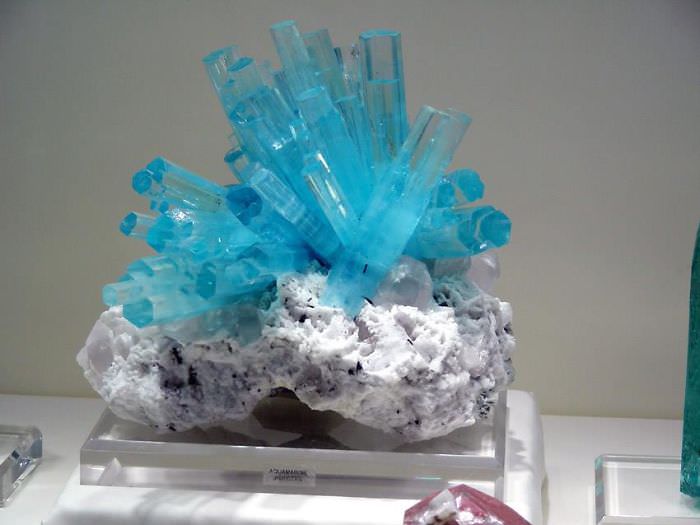
Aigue-Marine, also known as Aquamarine, is a blue-green variety of the mineral beryl. The name "aigue-marine" comes from the French words for "sea water," reflecting its color that ranges from pale blue to greenish-blue, reminiscent of the ocean. It is a popular gemstone used in jewelry due to its beautiful color, transparency, and durability. Aigue-Marine is found in several countries around the world, including Brazil, Madagascar, and Nigeria. It is believed to have calming and soothing properties, and is associated with the throat chakra, aiding in communication and self-expression. It is also the birthstone for March.
#56 Cuprite – Bisbee, AZ
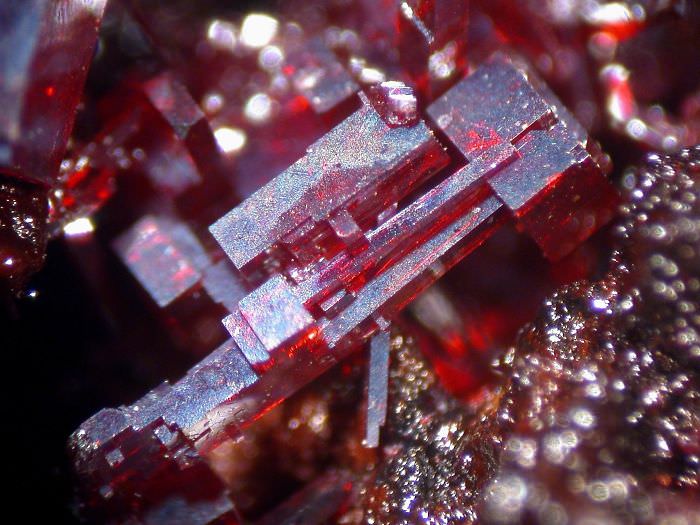
Cuprite is a copper oxide mineral that has a deep red to brownish-red color. It was first discovered in the 19th century in the Bisbee mining district of Arizona, which is now known for producing some of the world's finest cuprite specimens. The crystal structure of cuprite is cubic and it is commonly found in association with other copper minerals like chalcocite, malachite, and azurite. Cuprite is highly prized by mineral collectors for its rich color and attractive crystal habit. It has also been used historically as a copper ore due to its high copper content. However, its rarity and value as a mineral specimen make it more commonly found in mineral collections than in commercial use.
#57 Euchlorine – Russia
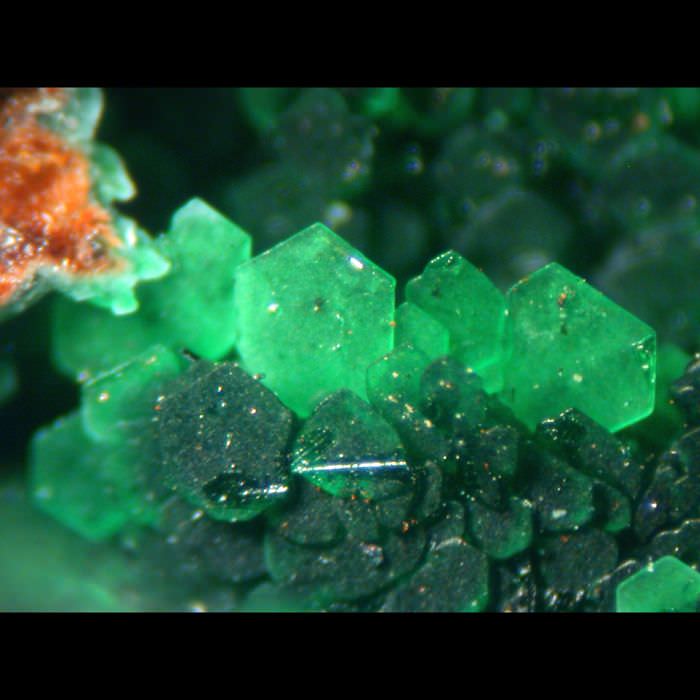
Euchlorine is a rare mineral that is composed of potassium, sodium, magnesium, iron, and chlorine. It has a greenish-gray color and a vitreous to greasy luster. Euchlorine is found in only a few locations worldwide, including Russia, Italy, and Sweden. In Russia, it is found in the Kola Peninsula, where it occurs as a secondary mineral in veins and fractures in metamorphic rocks. Euchlorine has been used in the past for manufacturing fertilizer due to its potassium content. Its rarity and unique properties also make it a sought-after collector's item for mineral enthusiasts.
#58 Esquel Pallasite Meteorite – only comes from space
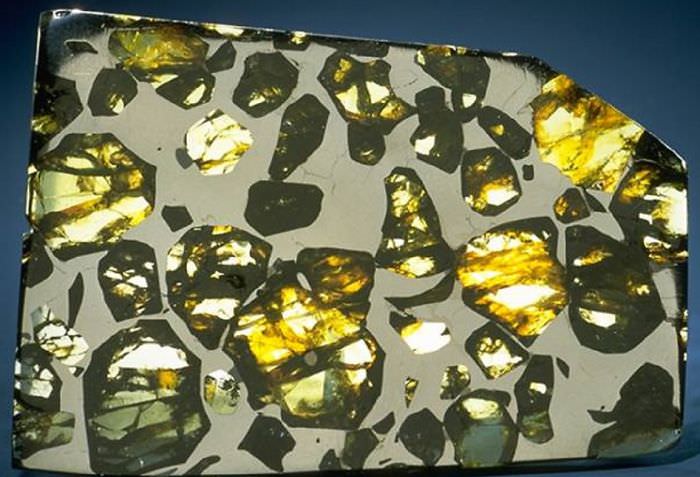
Esquel Pallasite Meteorite is a rare and unique type of meteorite that is believed to have originated from the boundary between the core and the mantle of a shattered asteroid or possibly even a planet. It was discovered in Argentina in 1951 and is estimated to be around 4.5 billion years old, the same age as the solar system. What makes the Esquel Pallasite Meteorite so remarkable is that it contains beautiful green-yellow crystals of the mineral olivine embedded in a matrix of iron-nickel alloy. The meteorite is highly valued by collectors and is considered to be one of the most visually stunning meteorites ever discovered.
#59 Sunny blue sky, Ceylon Sapphire
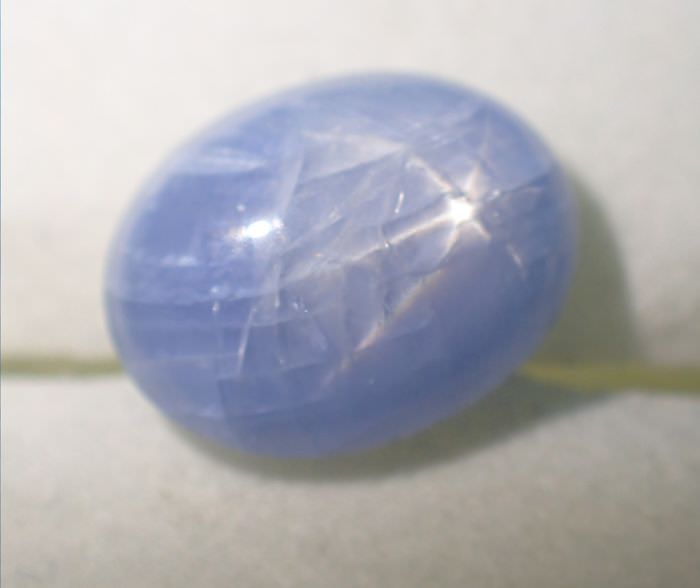
Ceylon sapphire is a highly valued gemstone due to its rich blue color and excellent clarity. It is mined primarily in Sri Lanka and is also known as Sri Lankan sapphire. The color of Ceylon sapphire ranges from pale blue to deep blue and sometimes exhibits a slight green or violet hue. The intensity of the blue color is determined by the amount of iron and titanium present in the crystal. The finest Ceylon sapphires are highly transparent and have a bright, lively appearance, often referred to as "sunny blue sky" due to their vibrant blue color. Ceylon sapphires are popular for use in fine jewelry, particularly engagement rings and other special occasion pieces.
#60 Olivine
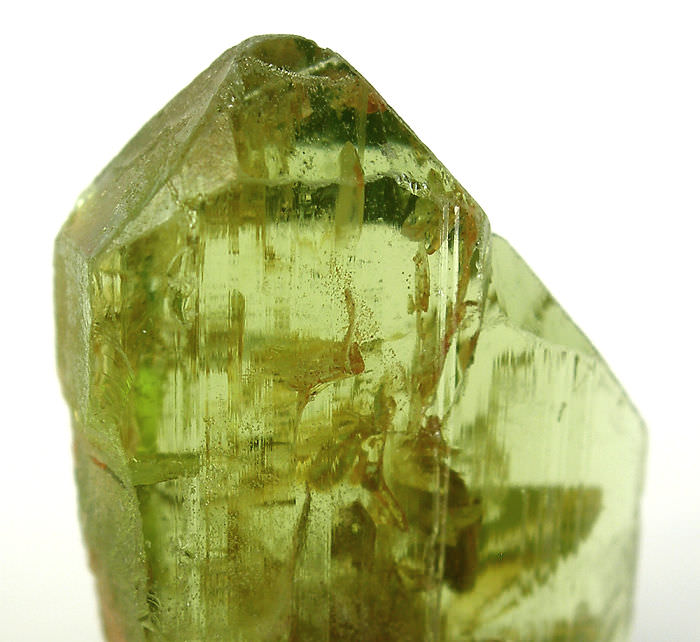
Olivine, also known as peridot, is a mineral composed of iron, magnesium, and silicate. It has a yellow-green to green color and is transparent to translucent. Olivine is formed in volcanic rocks and in the mantle of the earth. It is also commonly found in meteorites. The gemstone variety of olivine is known as peridot, and it is often used in jewelry. Peridot has a hardness of 6.5-7 on the Mohs scale, making it a relatively durable gemstone. It is also believed to have metaphysical properties, such as promoting prosperity, abundance, and emotional balance.
#61 Astrophyllite

Astrophyllite is a rare and beautiful titanium mineral that exhibits a unique starburst pattern, making it highly sought after by collectors and jewelry makers. It is typically brown to golden-yellow in color and can be found in a range of locations, including Russia, Canada, Norway, and the United States. Astrophyllite is believed to have strong metaphysical properties, and is said to promote inner peace, spiritual growth, and insight. Some people use it during meditation to enhance their intuition and connect with higher realms of consciousness. Due to its rarity and beauty, astrophylite is a popular choice for unique and eye-catching jewelry pieces.
#62 Insect Inclusion Baltic Amber
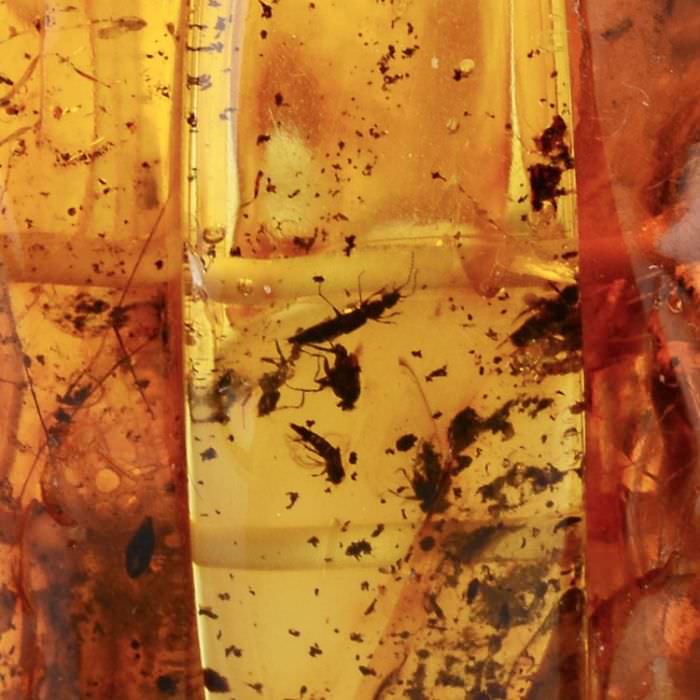
Baltic Amber is a fossilized resin that comes from pine trees that grew in Northern Europe about 44 million years ago. It is a beautiful golden color and is often used in jewelry-making due to its unique and beautiful appearance. Baltic Amber is also known for its healing properties, and is believed to have a calming effect on the mind and body, as well as helping with pain relief and reducing inflammation. It is also said to promote positive energy and balance emotions. Baltic Amber is found primarily in the Baltic region of Europe, but can also be found in smaller quantities in other parts of the world.
Sometimes, the resin captured small insects or other organisms, which became trapped inside and eventually fossilized along with the resin. They offer a unique glimpse into prehistoric life, allowing scientists to study ancient ecosystems and learn about the behavior and appearance of long-extinct insects. Collectors value them for their beauty and rarity, with some specimens fetching high prices on the market.
#63 Tourmaline
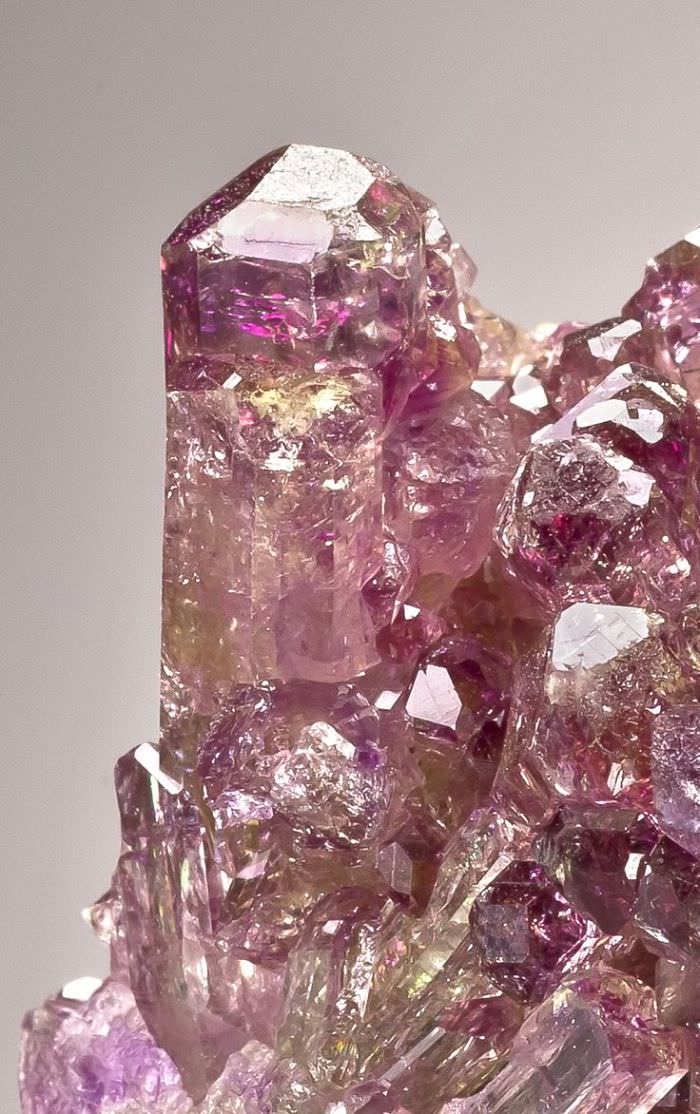
Tourmaline is a complex and diverse mineral that comes in a wide range of colors, including pink, red, green, blue, and black. Its crystal structure allows it to exhibit a unique property called pyroelectricity, which means it can generate an electric charge when heated or cooled. Tourmaline is also piezoelectric, meaning it can generate an electric charge when subjected to pressure. This makes it a valuable component in various electronic devices. Tourmaline is found in many locations worldwide, including Brazil, Afghanistan, and the United States. It has been used for centuries for its supposed healing properties and is believed to have calming and grounding effects.
#64 Acantithe Coated by Chalcopyrite on White Quartz and Rock

Acantithe is a rare silver sulfide mineral that is often found in hydrothermal veins. Its color is typically black, with a metallic luster. In this specimen, the acantithe is coated by chalcopyrite, which is a copper iron sulfide mineral that is also commonly found in hydrothermal veins. Chalcopyrite's color is typically brassy yellow, with a metallic luster. The white quartz and rock provide a beautiful contrasting background for the silver and gold tones of the minerals. This specimen is not only aesthetically pleasing, but it also showcases the geological processes that created these minerals and their unique properties.
#65 Native silver – British Columbia
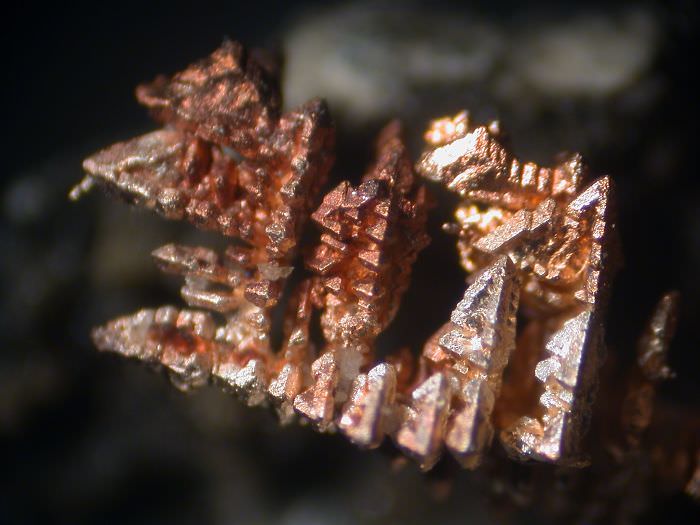
Native silver is a naturally occurring silver mineral. It is often found in association with other minerals such as copper, lead, and gold. Native silver is known for its metallic luster and is typically found in a dendritic or wire-like form. British Columbia is a well-known location for the mining of native silver. It is typically found in hydrothermal veins and is often associated with other minerals such as quartz and calcite. The silver deposits in British Columbia are some of the largest in the world and have been mined for over a century. Native silver is highly valued for its beauty and rarity, and is used in various industries such as jewelry-making and electronics.
#66 Labradorit
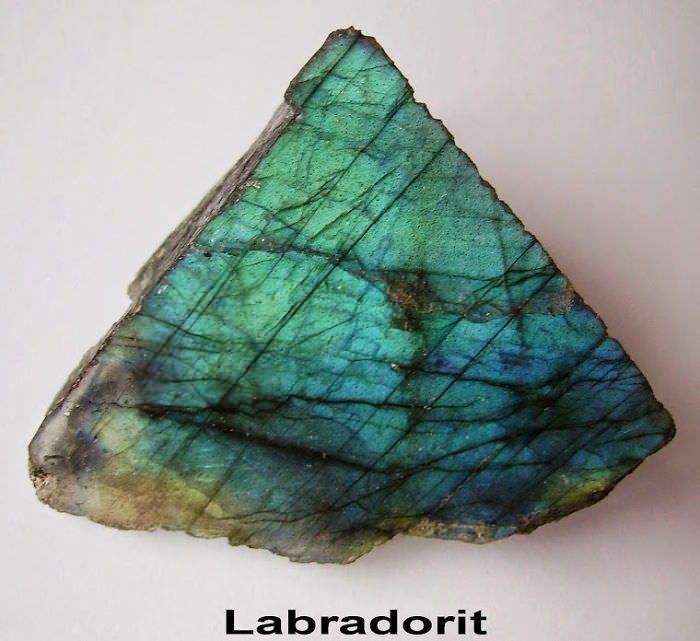
Labradorite is a feldspar mineral that exhibits a unique optical phenomenon called labradorescence. It is a beautiful stone that typically displays a range of iridescent colors, including blue, green, yellow, and orange. The stone is named after the location where it was first discovered, on the coast of Labrador, Canada. Labradorite is believed to have mystical and protective properties, and is often used in spiritual practices and for healing purposes. It is also a popular choice for jewelry due to its striking appearance and versatile color range. Labradorite is found in several locations around the world, including Canada, Madagascar, Russia, and the United States.
#67 ohn’s Rock’s
#68 Manganite – South Africa
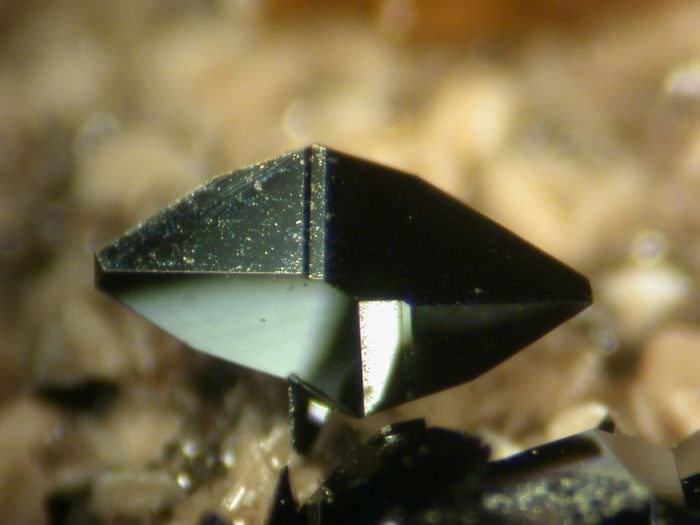
Manganite is a rare mineral that consists of manganese oxide. It has a black to dark gray color and a metallic luster. The crystal structure of manganite is complex, and it can occur in various forms, including prismatic or acicular crystals, fibrous aggregates, or massive forms. Manganite is found in several locations worldwide, including South Africa, Germany, Brazil, Australia, and the United States. However, the largest and most significant deposits are found in the Kalahari Manganese Field in South Africa. Manganite is highly valued by mineral collectors for its unique crystal structure and rarity, and it has some industrial applications in battery production and glassmaking.
#69 Rainbow Lattice Sunstone – Australia
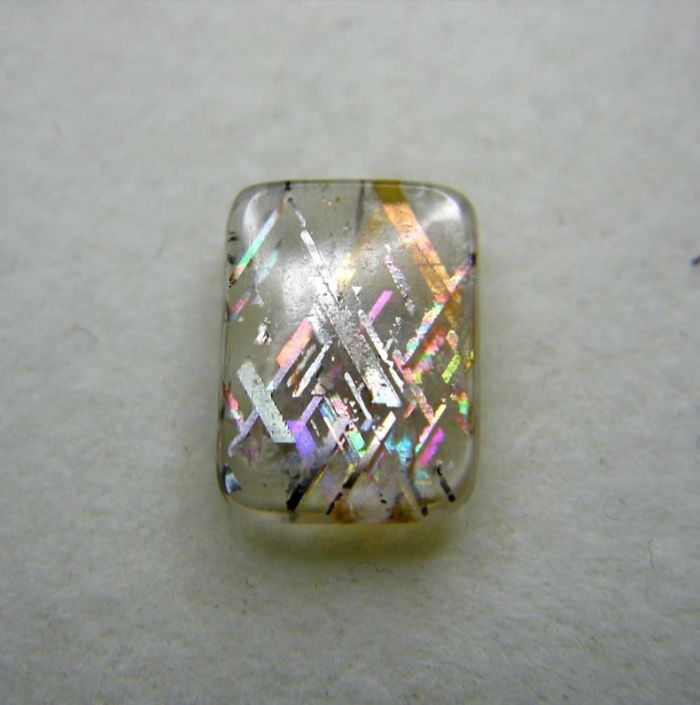
Rainbow Lattice Sunstone is a unique type of feldspar gemstone found in Australia. This rare stone is characterized by its distinctive iridescence, which displays an array of colors ranging from bright reds, oranges, yellows, greens, and blues. The iridescence is caused by thin layers of copper within the stone that reflect light and create the rainbow effect.
Rainbow Lattice Sunstone is also believed to have metaphysical properties that promote personal growth, self-awareness, and spiritual evolution. It is said to help release negative energy and promote a sense of inner peace and joy. Due to its rarity and beauty, Rainbow Lattice Sunstone is highly sought after by collectors and gemstone enthusiasts.
#70 Iridescent mass
#71 Spectrolite (a variety of labradorite found only in Finland)
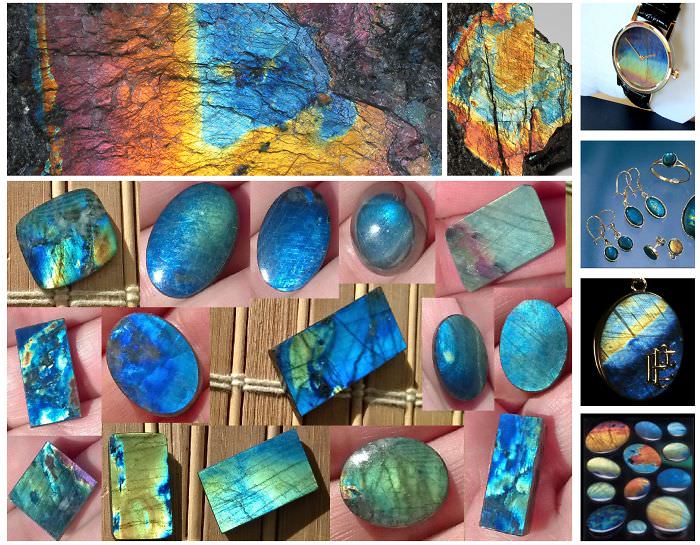
Spectrolite is a type of labradorite found only in Finland, specifically in the Ylämaa region. It's known for its iridescent display of colors, which is caused by light reflecting off layers of minerals within the stone. The colors in spectrolite can range from blues and greens to yellows, oranges, and reds. Spectrolite is considered to be a highly protective stone, known for its ability to help the wearer repel negativity and shield against negative energies. It's also believed to enhance intuition and psychic abilities, making it a popular choice for those interested in spiritual development. Spectrolite is highly valued by collectors and jewelry makers for its unique and striking appearance.
#72 Acanthite coated by Chalcopyrite and Silver Wires
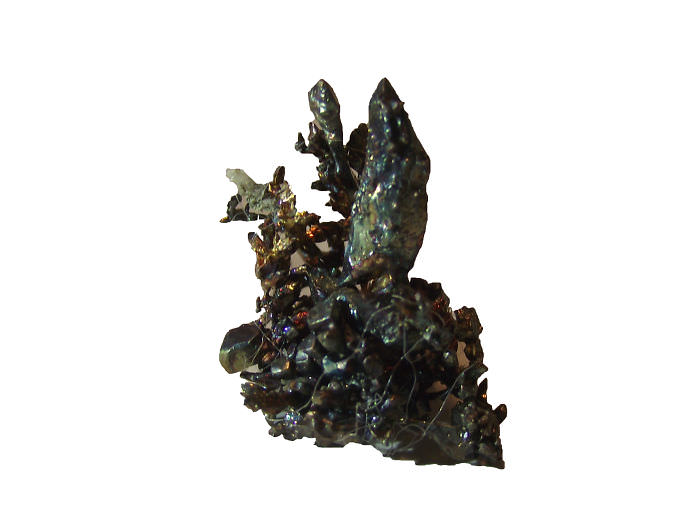
Acanthite is a silver sulfide mineral that can be found in hydrothermal veins and is a primary silver mineral. This particular specimen has an interesting feature - it is coated by chalcopyrite, a copper iron sulfide mineral, and also features silver wires. This combination of minerals creates a beautiful contrast between the silver and the brassy yellow of the chalcopyrite. The specimen likely formed in a hydrothermal environment with the minerals precipitating out of hot water solutions. The exact location of this specimen is unknown, but acanthite is found in many countries, including Mexico, Bolivia, and Chile.
#73 Calcite – Romania
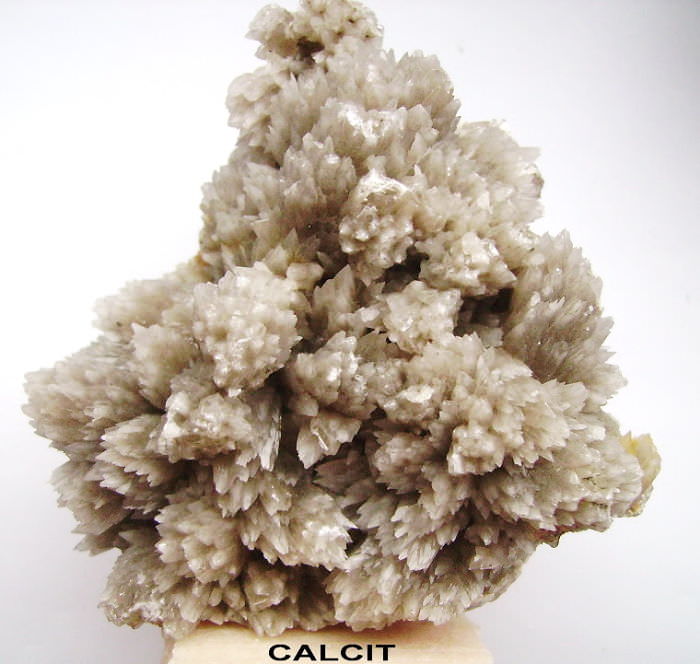
Calcite is a widespread mineral, but some of the most stunning specimens come from Romania. These calcite crystals can be found in a variety of colors, including pink, green, and orange. The crystal formations can be quite intricate and beautiful, with a delicate structure that allows light to pass through in a captivating way. Calcite is a mineral that forms in a variety of environments, including sedimentary rocks, igneous rocks, and hydrothermal veins. In Romania, calcite can be found in deposits formed by hydrothermal processes associated with volcanic activity. These deposits are often found in caves and mines, where the calcite crystals have had time to grow undisturbed over long periods of time.
#74 Labradorite
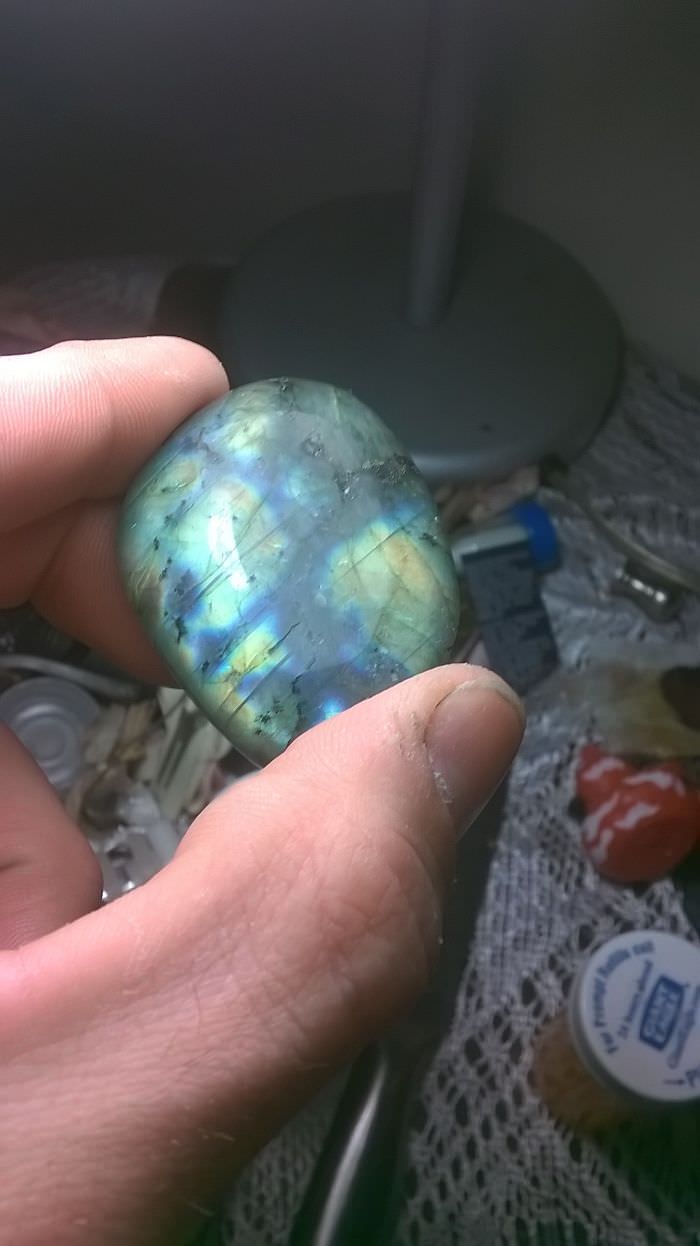
Labradorite is a feldspar mineral that exhibits a remarkable iridescence when viewed from certain angles. The gemstone is named after the Canadian province of Labrador, where it was first discovered. It is composed of calcium, sodium, and aluminum silicate and is typically found in igneous rocks like basalt and gabbro. The iridescence in labradorite is caused by light interference as it passes through the layers of minerals that make up the stone. Labradorite is often used in jewelry due to its unique appearance, and it is also valued in crystal healing for its supposed ability to promote intuition, psychic abilities, and spiritual connection.
#75 Raw Amber
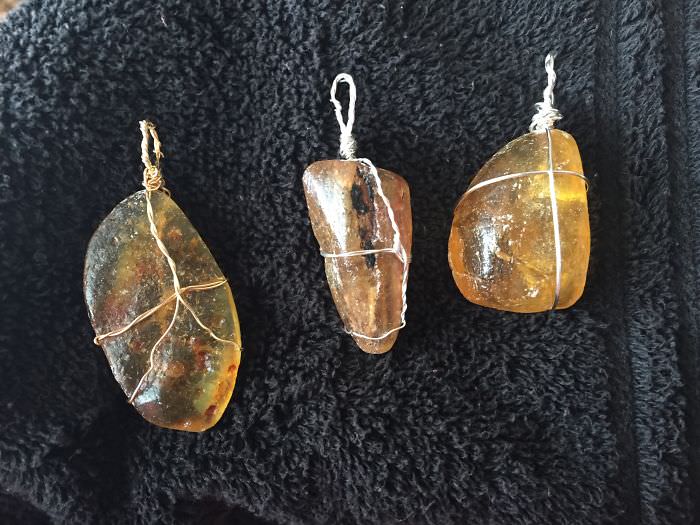
Raw amber is a fossilized tree resin that is millions of years old. It is found all over the world but is most commonly found in the Baltic region. Amber is prized for its beauty and is often used in jewelry making. It ranges in color from yellow to brown and sometimes has inclusions of plants, insects, and other small animals. Amber is also used in traditional medicine for its supposed healing properties. When rubbed, it creates a static charge, which has been used for centuries to treat various ailments. Its history and rarity make it a highly prized gemstone.
#76 Beautiful rocks from Rubyfall Georgia
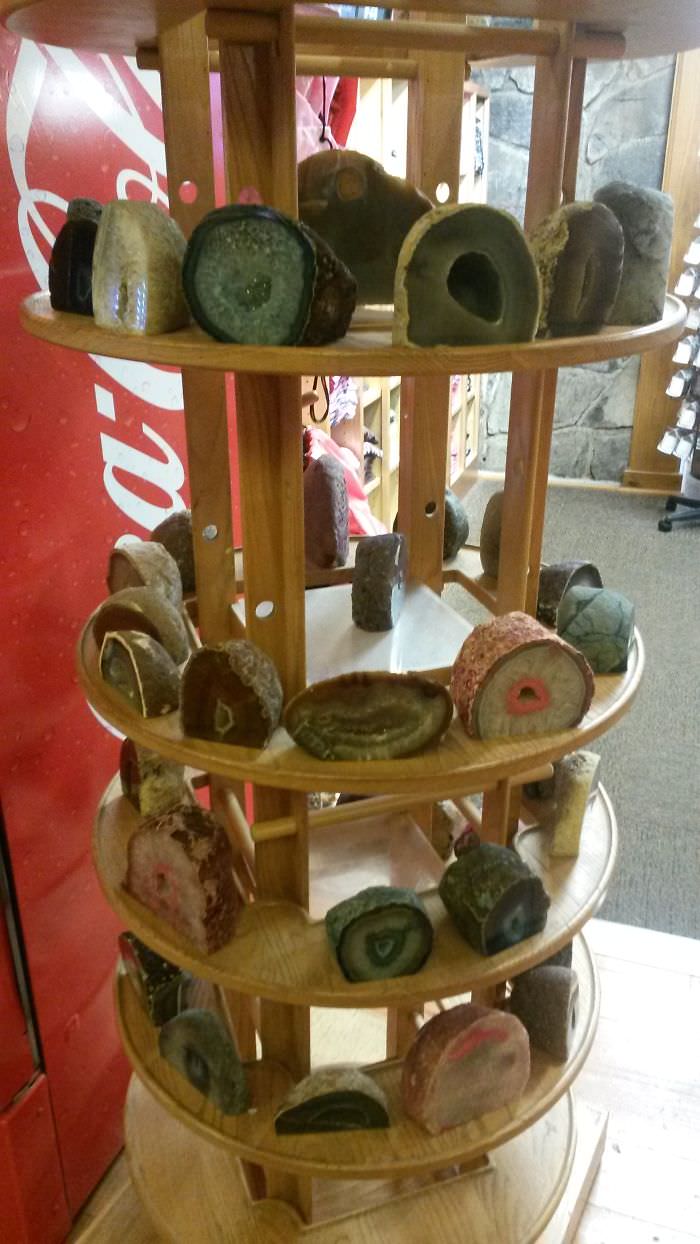
Ruby Falls is a popular tourist destination located in Chattanooga, Tennessee, not in Georgia. However, the rocks found in the underground waterfall cave system are quite fascinating. The cave is made of limestone and has several formations such as stalactites and stalagmites. The rocks found inside are mostly sedimentary rocks such as limestone, shale, and sandstone. These rocks were formed over millions of years through the process of erosion and sedimentation. Visitors to Ruby Falls can take guided tours to explore the cave system and see the unique rock formations up close.



